
390
14 CFR Ch. I (1–1–24 Edition)
Pt. 129
9
For B–717 series airplanes, resolution = .005g. For Dassault F900C/F900EX airplanes, resolution = .007g.
10
For A330/A340 series airplanes, resolution = 1.05% (0.250
°
>0.120
°
)
11
For A330/A340 series airplanes, resolution = 1.05% (0.250
°
>0.120
°
). For A330 B2/B4 series airplanes, resolution = 0.92%
(0.230
°
>0.125
°
).
12
For A330/A340 series airplanes, spoiler resolution = 1.406% (0.703
°
>0.100
°
).
13
For A330/A340 series airplanes, resolution = 0.5
°
C.
14
For Dassault F900C/F900EX airplanes, Radio Altitude resolution = 1.25 ft.
15
For A330/A340 series airplanes, resolution = 0.352 degrees.
16
For A318/A319/A320/A321 series airplanes, resolution = 4.32%. For A330/A340 series airplanes, resolution is 3.27% of full
range for throttle lever angle (TLA); for reverse thrust, reverse throttle lever angle (RLA) resolution is nonlinear over the active
reverse thrust range, which is 51.54 degrees to 96.14 degrees. The resolved element is 2.8 degrees uniformly over the entire ac-
tive reverse thrust range, or 2.9% of the full range value of 96.14 degrees.
17
For A318/A319/A320/A321 series airplanes, with IAE engines, resolution = 2.58%.
18
For all aircraft manufactured on or after December 6, 2010, the seconds per sampling interval is 0.125. Each input must be
recorded at this rate. Alternately sampling inputs (interleaving) to meet this sampling interval is prohibited.
19
For all 737 model airplanes manufactured between August 19, 2000, and April 6, 2010: The seconds per sampling interval
is 0.5 per control input; the remarks regarding the sampling rate do not apply; a single control wheel force transducer installed on
the left cable control is acceptable provided the left and right control wheel positions also are recorded.
[Doc. No. 28109, 62 FR 38390, July 17, 1997; 62 FR 48135, Sept. 12, 1997, as amended by Amdt.
125–32, 64 FR 46121, Aug. 24, 1999; 65 FR 2295, Jan. 14, 2000; Amdt. 125–32, 65 FR 2295, Jan. 14,
2000; Amdt. 125–34, 65 FR 51745, Aug. 24, 2000; 65 FR 81735, Dec. 27, 2000; Amdt. 125–39, 67 FR
54323, Aug. 21, 2002; Amdt. 125–42, 68 FR 42937, July 18, 2003; 68 FR 50069, Aug. 20, 2003; 68 FR
53877, Sept. 15, 2003; Amdt. 125–54, 73 FR 12568, Mar. 7, 2008; Amdt. 125–56, 73 FR 73180, Dec. 2,
2008; Amdt. 125–60, 75 FR 17046, Apr. 5, 2010; Amdt. 125–59, 75 FR 7357, Feb. 19, 2010; Amdt. 125–
62, 78 FR 39971, July 3, 2013; Docket FAA–2017–0733, Amdt. 125–67, 82 FR 34399, July 25, 2017]
PART 129—OPERATIONS: FOREIGN
AIR CARRIERS AND FOREIGN OP-
ERATORS OF U.S.-REGISTERED
AIRCRAFT ENGAGED IN COM-
MON CARRIAGE
Sec.
S
PECIAL
F
EDERAL
A
VIATION
R
EGULATION
N
O
.
97 [N
OTE
]
Subpart A—General
129.1
Applicability and definitions.
129.5
Operations specifications.
129.7
Application, issuance, or denial of op-
erations specifications.
129.9
Contents of operations specifications.
129.11
Amendment, suspension and termi-
nation of operations specifications.
129.13
Airworthiness and registration cer-
tificates.
129.14
Maintenance program and minimum
equipment list requirements for U.S.-reg-
istered aircraft.
129.15
Flightcrew member certificates.
129.17
Aircraft communication and naviga-
tion equipment for operations under IFR
or over the top.
129.18
Collision Avoidance System.
129.19
Air traffic rules and procedures.
129.20
Digital flight data recorders.
129.21
Control of traffic.
129.22
Communication and navigation
equipment for rotorcraft operations
under VFR over routes navigated by pi-
lotage.
129.23
Transport category cargo service air-
planes: Increased zero fuel and landing
weights.
129.24
Cockpit voice recorders.
129.25
Airplane security.
129.28
Flightdeck security.
129.29
Smoking prohibitions.
Subpart B—Continued Airworthiness and
Safety Improvements
129.101
Purpose and definition.
129.103
[Reserved]
129.105
Aging airplane inspections and
records reviews for U.S.- registered mul-
tiengine aircraft.
129.107
Repairs assessment for pressurized
fuselages.
129.109
Supplemental inspections for U.S.-
registered aircraft.
129.111
Electrical wiring interconnection
systems (EWIS) maintenance program.
129.113
Fuel tank system maintenance pro-
gram.
129.115
Limit of validity.
129.117
Flammability reduction means.
129.119
Fuel tank vent explosion protection.
Subpart C—Special Federal Aviation
Regulations
129.201
SFAR No. 111—Lavatory Oxygen
Systems.
A
PPENDIX
A
TO
P
ART
129 [R
ESERVED
]
A
UTHORITY
: 49 U.S.C. 1372, 40113, 40119,
44101, 44701–44702, 44705, 44709–44711, 44713,
44716–44717, 44722, 44901–44904, 44906, 44912,
46105, Pub. L. 107–71 sec. 104.
S
OURCE
: Docket No. 1994, 29 FR 1720, Feb. 5,
1964, unless otherwise noted.
S
PECIAL
F
EDERAL
A
VIATION
R
EGULATION
N
O
. 97
E
DITORIAL
N
OTE
: For the text of SFAR No.
97, see part 91 of this chapter.
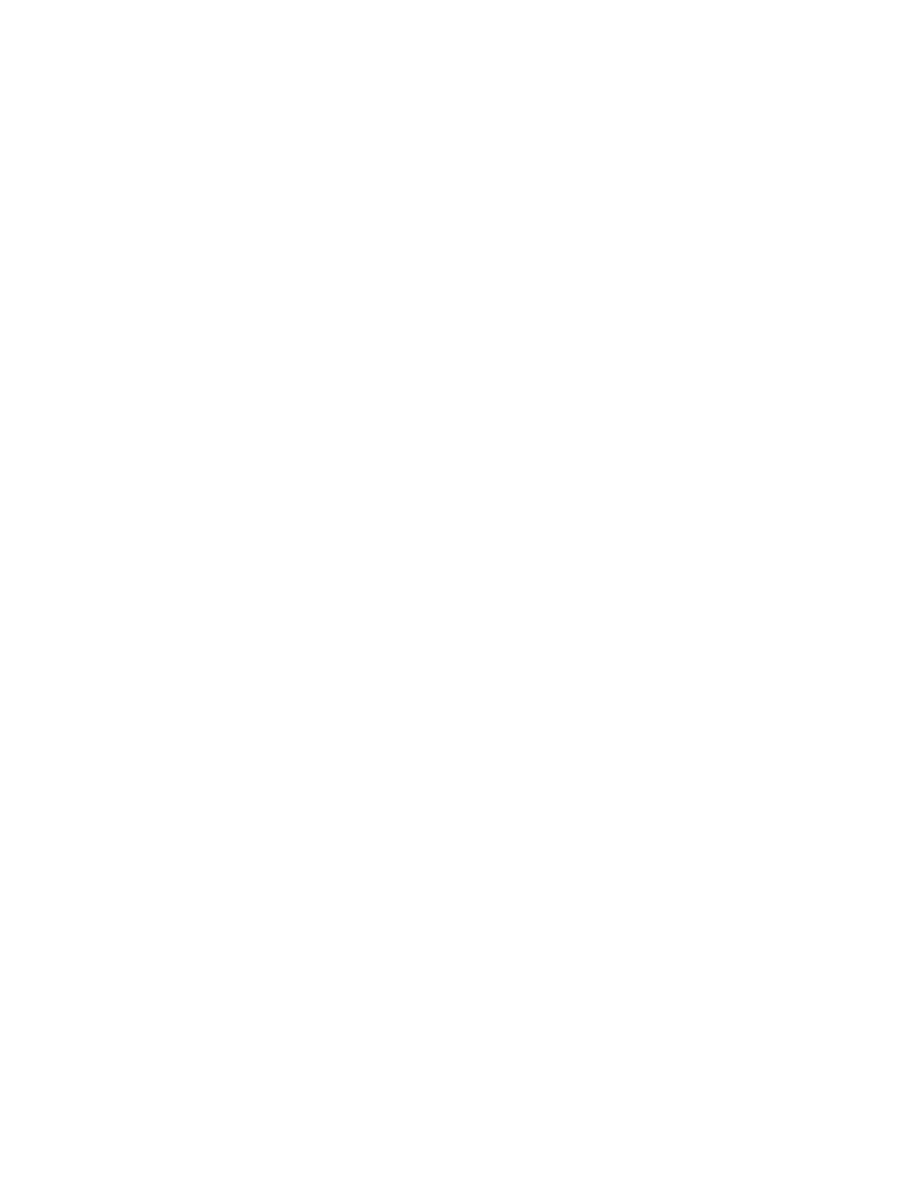
391
Federal Aviation Administration, DOT
§ 129.7
Subpart A—General
§ 129.1 Applicability and definitions.
(a)
Foreign air carrier operations in the
United States.
This part prescribes rules
governing the operation within the
United States of each foreign air car-
rier holding the following:
(1) A permit issued by the U.S. De-
partment of Transportation under 49
U.S.C. 41301 through 41306, or
(2) Other appropriate economic or ex-
emption authority issued by the U.S.
Department of Transportation.
(b)
Operations of U.S.-registered air-
craft solely outside the United States.
In
addition to the operations specified
under paragraph (a) of this section,
§§ 129.5, 129.7, 129.9, 129.11, 129.14, 129.20
and 129.24, and subpart B of this part
also apply to operations of U.S.-reg-
istered aircraft operated solely outside
the United States in common carriage
by a foreign person or foreign air car-
rier.
(c)
Definitions.
For the purpose of this
part—
(1)
Foreign person
means any person
who is not a citizen of the United
States and who operates a U.S.-reg-
istered aircraft in common carriage
solely outside the United States.
(2)
Years in service
means the calendar
time elapsed since an aircraft was
issued its first U.S. or first foreign air-
worthiness certificate.
[Doc. No. FAA–1999–5401, 67 FR 72762, Dec. 6,
2002, as amended by Amdt. 129–43, 72 FR
63413, Nov. 8, 2007; Amdt. 129–45, 73 FR 12570,
Mar. 7, 2008; Amdt. 129–45, 74 FR 32801, July
9, 2009; Amdt. 129–49, 76 FR 7489, Feb. 10, 2011]
§ 129.5 Operations specifications.
(a) Each foreign air carrier con-
ducting operations within the United
States, and each foreign air carrier or
foreign person operating U.S.-reg-
istered aircraft solely outside the
United States in common carriage
must conduct its operations in accord-
ance with operations specifications
issued by the Administrator under this
part.
(b) Each foreign air carrier con-
ducting operations within the United
States must conduct its operations in
accordance with the Standards con-
tained in Annex 1 (Personnel Licens-
ing), Annex 6 (Operation of Aircraft),
Part I (International Commercial Air
Transport—Aeroplanes) or Part III
(International Operations—Heli-
copters), as appropriate, and in Annex 8
(Airworthiness of Aircraft) to the Con-
vention on International Civil Avia-
tion.
(c) No foreign air carrier may operate
to or from locations within the United
States without, or in violation of, ap-
propriate operations specifications.
(d) No foreign air carrier or foreign
person shall operate U.S.-registered
aircraft solely outside the United
States in common carriage without, or
in violation of, appropriate operations
specifications.
(e) Each foreign air carrier must keep
each of its employees and other persons
used in its operations informed of the
provisions of its operations specifica-
tions that apply to that employee’s or
person’s duties and responsibilities.
(f) Operations specifications issued
under this part are effective until—
(1) The foreign air carrier or foreign
person surrenders them to the FAA;
(2) The Administrator suspends or
terminates the operations specifica-
tions; or
(3) The operations specifications are
amended as provided in § 129.11.
(g) Within 30 days after a foreign air
carrier or foreign person terminates
operations under part 129 of this sub-
chapter, the operations specifications
must be surrendered by the foreign air
carrier or foreign person to the respon-
sible Flight Standards office.
(h) No person operating under this
part may operate or list on its oper-
ations specifications any airplane list-
ed on operations specifications issued
under part 125 of this chapter.
[Doc. No. FAA–2009–0140; 76 FR 7489, Feb. 10,
2011, as amended by Docket FAA–2018–0119,
Amdt. 129–53, 83 FR 9174, Mar. 5, 2018]
§ 129.7 Application, issuance, or denial
of operations specifications.
(a) A foreign air carrier or foreign
person applying to the FAA for oper-
ations specifications under this part
must submit an application—
(1) In a form and manner prescribed
by the Administrator; and
(2) At least 90 days before the in-
tended date of operation.
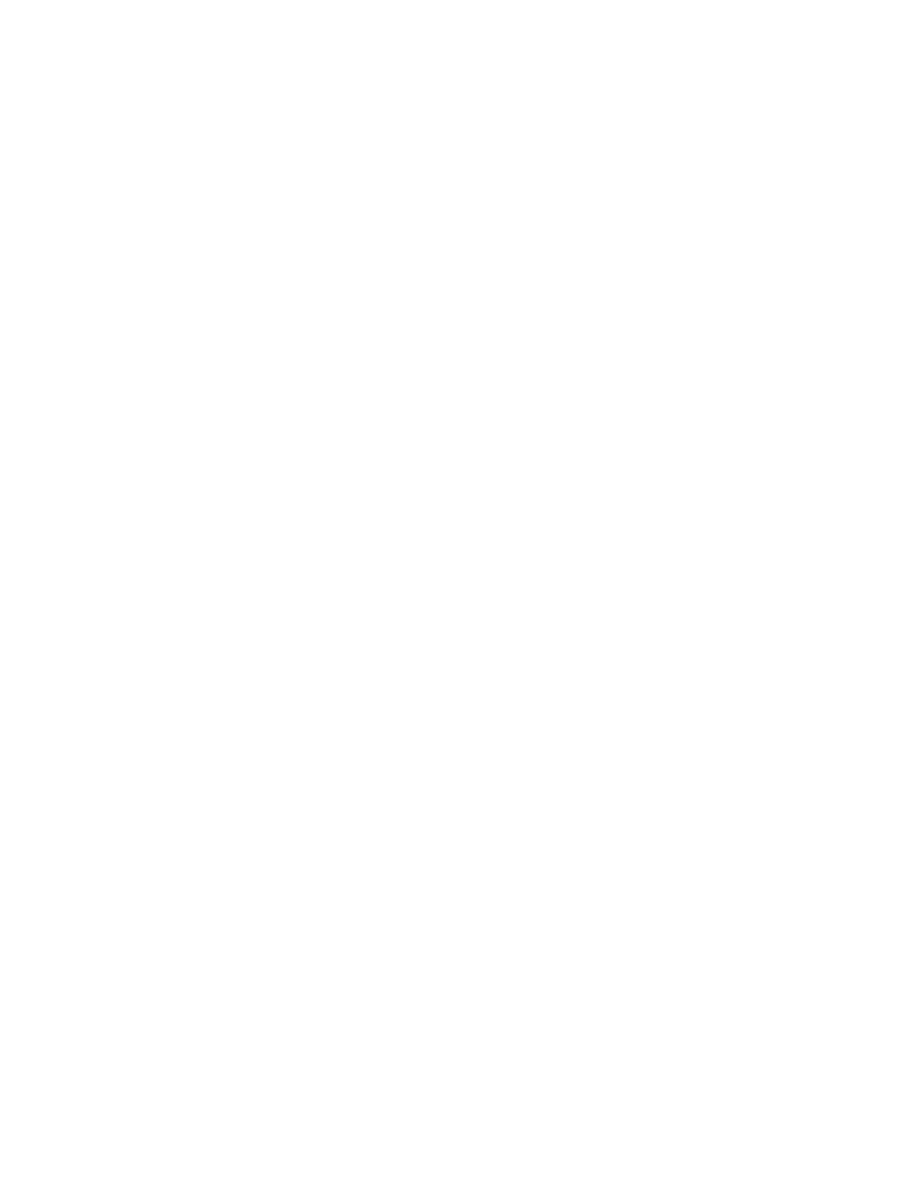
392
14 CFR Ch. I (1–1–24 Edition)
§ 129.9
(b) An authorized officer or employee
of the applicant, having knowledge of
the matters stated in the application,
must sign the application and certify
in writing that the statements in the
application are true. The application
must include two copies of the appro-
priate written authority issued to that
officer or employee by the applicant.
(c) A foreign applicant may be issued
operations specifications, if after re-
view, the Administrator finds the ap-
plicant—
(1) Meets the applicable requirements
of this part;
(2) Holds the economic or exemption
authority required by the Department
of Transportation, applicable to the op-
erations to be conducted;
(3) Complies with the applicable secu-
rity requirements of 49 CFR chapter
XII;
(4) Is properly and adequately
equipped to conduct the operations de-
scribed in the operations specifica-
tions; and
(5) Holds a valid air operator certifi-
cate issued by the State of the Oper-
ator.
(d) An application may be denied if
the Administrator finds that the appli-
cant is not properly or adequately
equipped to conduct the operations to
be described in the operations speci-
fications.
[Doc. No. FAA–2009–0140; 76 FR 7489, Feb. 10,
2011]
§ 129.9 Contents of operations speci-
fications.
(a) The contents of operations speci-
fications issued to a foreign air carrier
conducting operations within the
United States under § 129.1(a) shall in-
clude:
(1) The specific location and mailing
address of the applicant’s principal
place of business in the State of the
Operator and, if different, the address
that will serve as the primary point of
contact for correspondence between the
FAA and the foreign air carrier;
(2) Within 1 year after February 10,
2011, the designation of an agent for
service within the United States, in-
cluding the agent’s full name and office
address or usual place of residence;
(3) The certificate number and valid-
ity of the foreign air carrier’s Air Oper-
ator Certificate issued by the State of
the Operator;
(4) Each regular and alternate airport
to be used in scheduled operations;
(5) The type of aircraft and registra-
tion markings of each aircraft;
(6) The approved maintenance pro-
gram and minimum equipment list for
United States registered aircraft au-
thorized for use; and
(7) Any other item the Administrator
determines is necessary.
(b) The contents of operations speci-
fications issued to a foreign air carrier
or foreign person operating U.S.-reg-
istered aircraft solely outside the
United States in common carriage in
accordance with § 129.1(b) shall in-
clude—
(1) The specific location and mailing
address of the principal place of busi-
ness in the State of the Operator and,
if different, the address that will serve
as the primary point of contact for cor-
respondence between the FAA and the
foreign air carrier or foreign person;
(2) Within 1 year after February 10,
2011, the designation of an agent for
service within the United States, in-
cluding the agent’s full name and office
address or usual place of residence;
(3) In the case of a foreign air carrier,
the certificate number and validity of
the foreign air carrier’s Air Operator
Certificate issued by the State of the
Operator;
(4) Any other business names under
which the foreign air carrier or foreign
person may operate;
(5) The type, registration markings,
and serial number of each United
States registered aircraft authorized
for use;
(6) The approved maintenance pro-
gram and minimum equipment list for
United States registered aircraft au-
thorized for use; and
(7) Any other item the Administrator
determines is necessary.
[Doc. No. FAA–2009–0140; 76 FR 7489, Feb. 10,
2011; Amdt. 129–49–A, 76 FR 15212, Mar. 21,
2011]
§ 129.11 Amendment, suspension and
termination of operations specifica-
tions.
(a) The Administrator may amend
any operations specifications issued
under this part if—
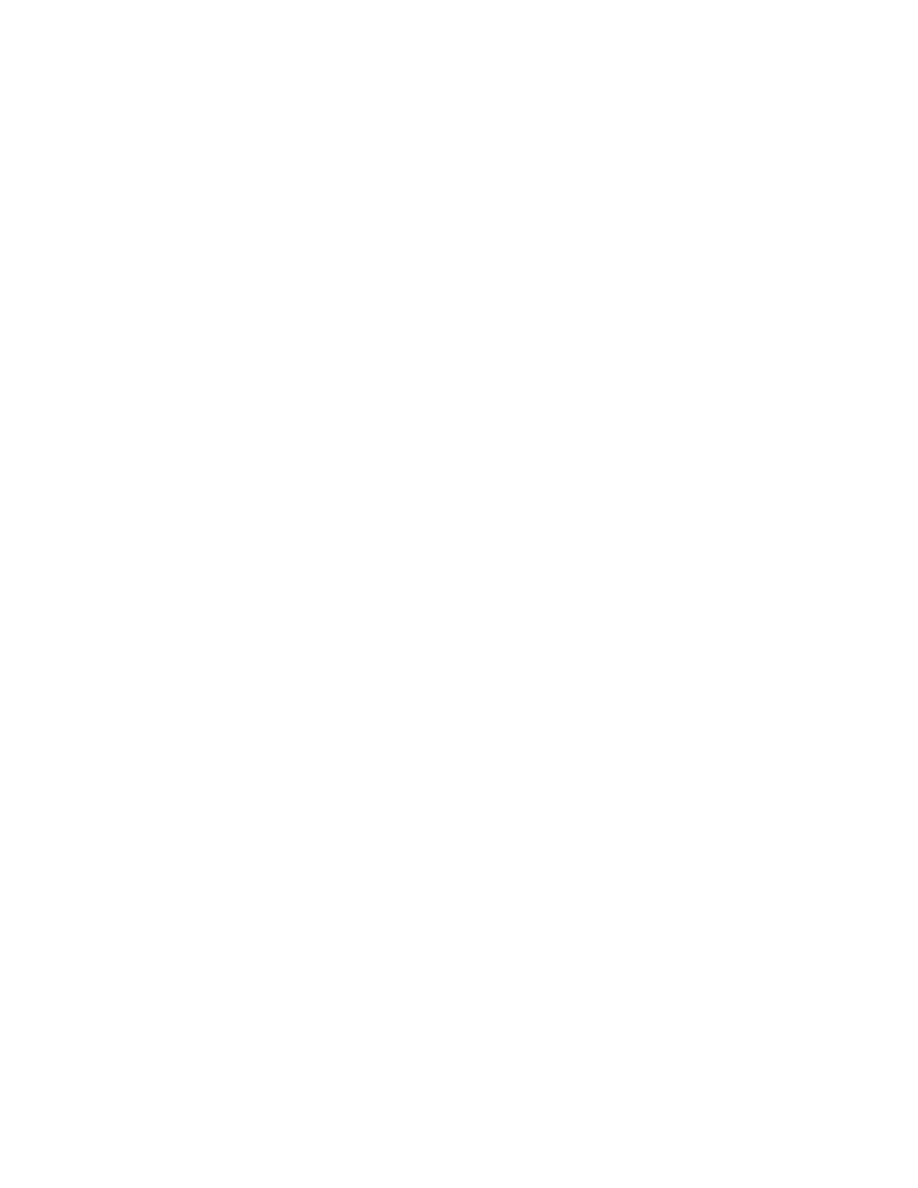
393
Federal Aviation Administration, DOT
§ 129.11
(1) The Administrator determines
that safety in air commerce and the
public interest require the amendment;
or
(2) The foreign air carrier or foreign
person applies for an amendment, and
the Administrator determines that
safety in air commerce and the public
interest allows the amendment.
(b) The Administrator may suspend
or terminate any operations specifica-
tions issued under this part if the Ad-
ministrator determines that safety in
air commerce and the public interest
require the suspension or termination;
(c) Except as provided in paragraphs
(f) and (g) of this section, when the Ad-
ministrator initiates an action to
amend, suspend or terminate a foreign
air carrier or foreign person’s oper-
ations specifications, the following
procedure applies:
(1) The responsible Flight Standards
office notifies the foreign air carrier or
foreign person in writing of the pro-
posed amendment, suspension or termi-
nation.
(2) The responsible Flight Standards
office sets a reasonable period (but not
less than 7 days) within which the for-
eign air carrier or foreign person may
submit written information, views, and
arguments on the amendment, suspen-
sion or termination.
(3) After considering all material pre-
sented, the responsible Flight Stand-
ards office notifies the foreign air car-
rier or foreign person of—
(i) The adoption of the proposed
amendment, suspension or termi-
nation;
(ii) The partial adoption of the pro-
posed amendment, suspension or termi-
nation; or
(iii) The withdrawal of the proposed
amendment, suspension or termi-
nation.
(4) If the responsible Flight Stand-
ards office issues an action to amend,
suspend or terminate the operations
specifications, it becomes effective not
less than 30 days after the foreign air
carrier or foreign person receives no-
tice of it unless—
(i) The responsible Flight Standards
office finds under paragraph (g) of this
section that there is an emergency re-
quiring immediate action with respect
to safety in air commerce; or
(ii) The foreign air carrier or foreign
person petitions for reconsideration of
the amendment, suspension or termi-
nation under paragraph (e) of this sec-
tion.
(d) When the foreign air carrier or
foreign person applies for an amend-
ment to its operations specifications,
the following procedure applies:
(1) The foreign air carrier or foreign
person must file an application to
amend its operations specifications—
(i) At least 90 days before the date
proposed by the applicant for the
amendment to become effective in
cases of mergers; acquisitions of airline
operational assets that require an addi-
tional showing to Department of
Transportation for economic author-
ity; major changes in the type of oper-
ation; and resumption of operations
following a suspension of operations as
a result of bankruptcy actions, unless a
shorter time is approved by the Admin-
istrator.
(ii) At least 30 days before the date
proposed by the applicant for the
amendment to become effective in all
other cases.
(2) The application must be sub-
mitted to the responsible Flight Stand-
ards office in a form and manner pre-
scribed by the Administrator.
(3) After considering all material pre-
sented, the responsible Flight Stand-
ards office notifies the foreign air car-
rier or foreign person of—
(i) The adoption of the applied for
amendment;
(ii) The partial adoption of the ap-
plied for amendment; or
(iii) The denial of the applied for
amendment.
(4) If the responsible Flight Stand-
ards office approves the amendment,
following coordination with the foreign
air carrier or foreign person regarding
its implementation, the amendment is
effective on the date the responsible
Flight Standards office approves it.
(e) The foreign air carrier or foreign
person may petition for reconsider-
ation of a full or partial adoption of an
amendment, a denial of an amendment
or a suspension or termination of oper-
ations specifications.
(f) When a foreign air carrier or for-
eign person seeks reconsideration of a
decision from the responsible Flight
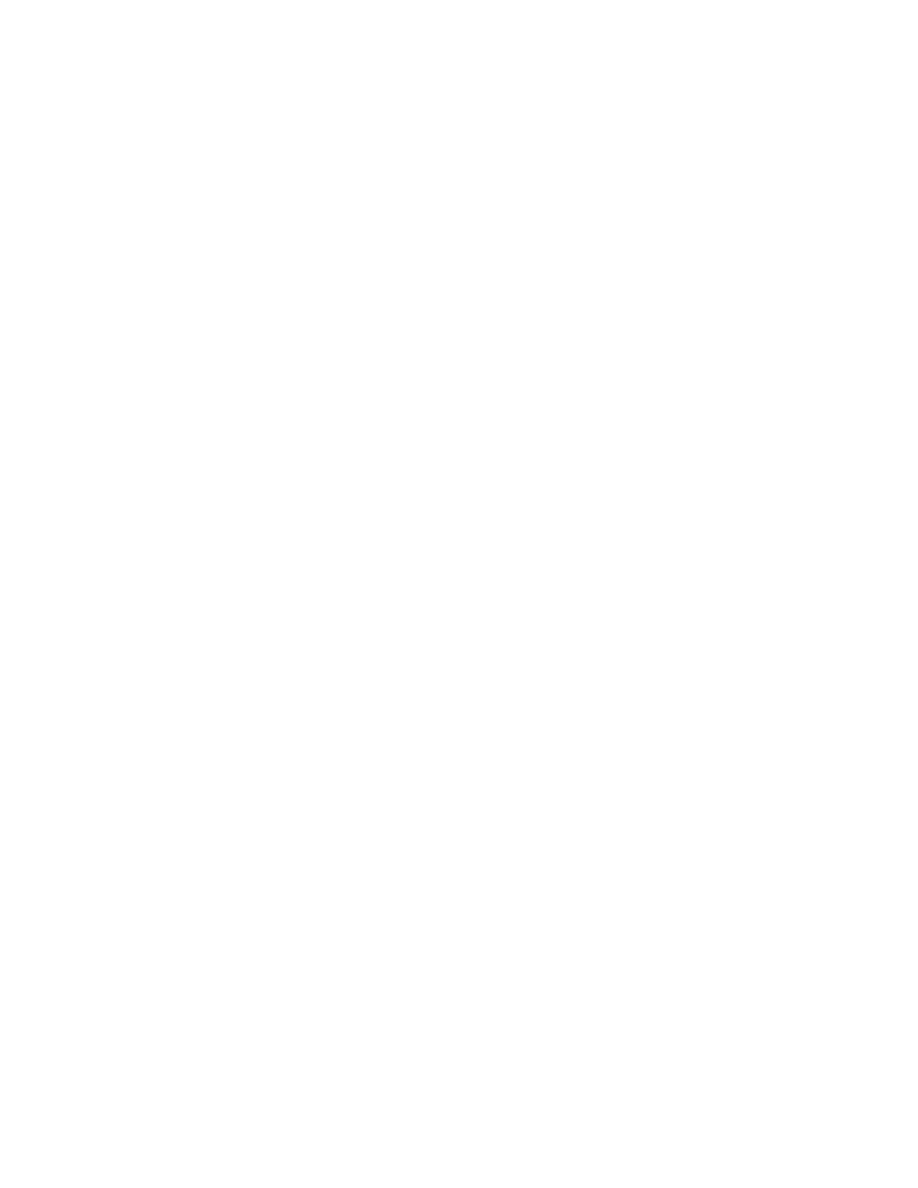
394
14 CFR Ch. I (1–1–24 Edition)
§ 129.13
Standards office concerning the
amendment, suspension or termination
of operations specifications, the fol-
lowing procedure applies:
(1) The foreign air carrier or foreign
person must petition for reconsider-
ation of that decision within 30 days
after the date that the foreign air car-
rier or foreign person receives a notice
of the decision.
(2) The foreign air carrier or foreign
person must address its petition to the
Executive Director, Flight Standards
Service.
(3) A petition for reconsideration, if
filed within the 30-day period, suspends
the effectiveness of any amendment,
suspension or termination issued by
the responsible Flight Standards office
unless the responsible Flight Standards
office has found, under paragraph (g) of
this section, that an emergency exists
requiring immediate action with re-
spect to safety in air transportation or
air commerce.
(g) If the responsible Flight Stand-
ards office finds that an emergency ex-
ists requiring immediate action with
respect to safety in air commerce or
air transportation that makes the pro-
cedures set out in this section imprac-
ticable or contrary to the public inter-
est, that office may make the amend-
ment, suspension or termination effec-
tive on the day the foreign air carrier
or foreign person receives notice of it.
In the notice to the foreign air carrier
or foreign person, the responsible
Flight Standards office will articulate
the reasons for its finding that an
emergency exists requiring immediate
action with respect to safety in air
transportation or air commerce or that
makes it impracticable or contrary to
the public interest to stay the effec-
tiveness of the amendment, suspension
or termination.
[Doc. No. FAA–2009–0140, 76 FR 7490, Feb. 10,
2011, as amended by Docket FAA–2018–0119,
Amdt. 129–53, 83 FR 9174, Mar. 5, 2018]
§ 129.13 Airworthiness and registra-
tion certificates.
(a) No foreign air carrier may operate
any aircraft within the United States
unless that aircraft carries a current
registration certificate and displays
the nationality and registration mark-
ings of the State of Registry, and an
airworthiness certificate issued or vali-
dated by:
(1) The State of Registry; or
(2) The State of the Operator, pro-
vided that the State of the Operator
and the State of Registry have entered
into an agreement under Article 83
bis
of the Convention on International
Civil Aviation that covers the aircraft.
(b) No foreign air carrier may operate
a foreign aircraft within the United
States except in accordance with the
limitations on maximum certificated
weights prescribed for that aircraft and
that operation by the country of manu-
facture of the aircraft.
[Doc. No. 1994, 29 FR 1720, Feb. 5, 1964, as
amended by Amdt. 129–33, 67 FR 42455, June
21, 2002; Amdt. 129–49, 76 FR 7490, Feb. 10,
2011]
§ 129.14 Maintenance program and
minimum equipment list require-
ments for U.S.-registered aircraft.
(a) Each foreign air carrier and each
foreign person operating a U.S.-reg-
istered aircraft within or outside the
United States in common carriage
must ensure that each aircraft is main-
tained in accordance with a program
approved by the Administrator in the
operations specifications.
(b) No foreign air carrier or foreign
person may operate a U.S.-registered
aircraft with inoperable instruments or
equipment unless the following condi-
tions are met:
(1) A master minimum equipment list
exists for the aircraft type.
(2) The foreign operator submits for
review and approval its aircraft min-
imum equipment list based on the mas-
ter minimum equipment list, to the re-
sponsible Flight Standards office for
the operator. The foreign operator
must show, before minimum equipment
list approval can be obtained, that the
maintenance procedures used under its
maintenance program are adequate to
support the use of its minimum equip-
ment list.
(3) For leased aircraft maintained
and operated under a U.S. operator’s
continuous airworthiness maintenance
program and FAA-approved minimum
equipment list, the foreign operator
submits the U.S. operator’s approved
continuous airworthiness maintenance
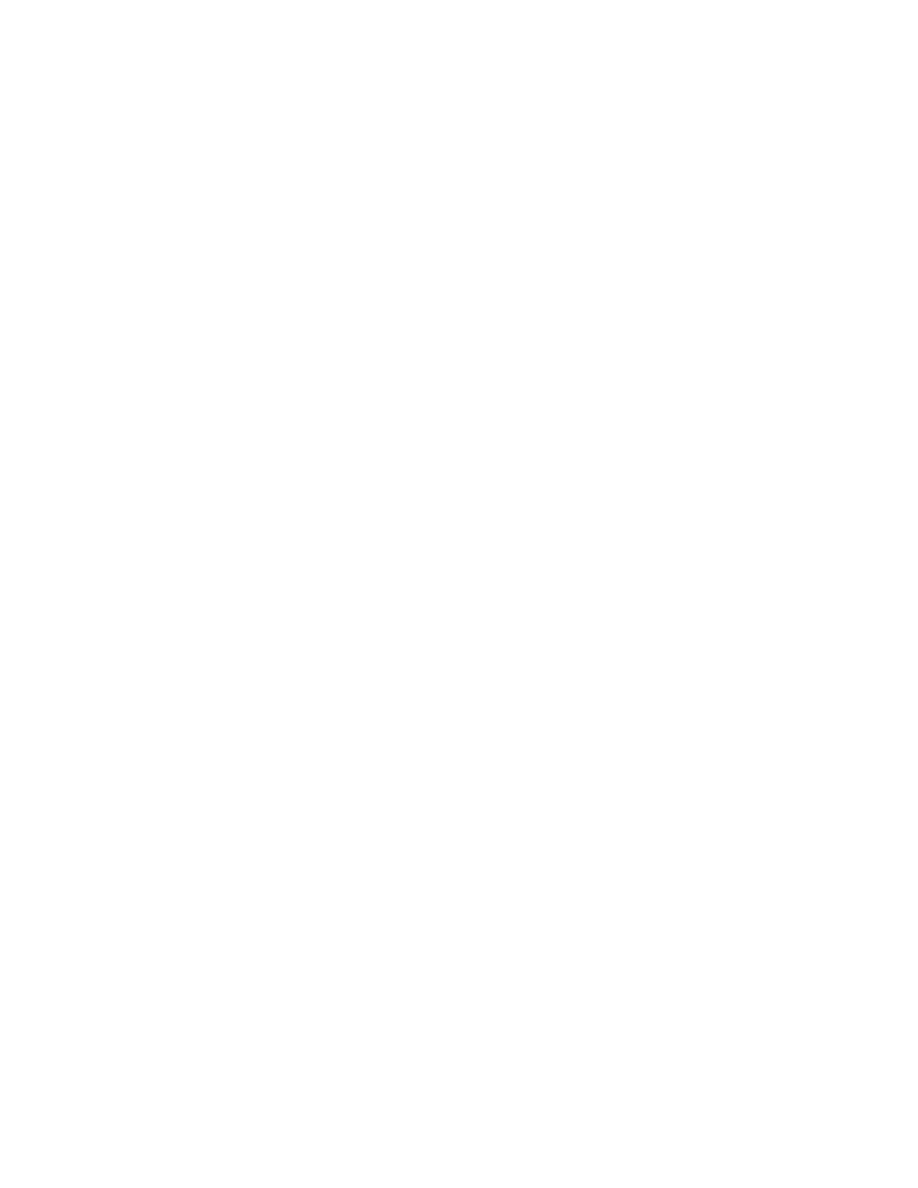
395
Federal Aviation Administration, DOT
§ 129.17
program and approved aircraft min-
imum equipment list to the FAA office
prescribed in paragraph (b)(2) of this
section for review and evaluation. The
foreign operator must show that it is
capable of operating under the lessor’s
approved maintenance program and
that it is also capable of meeting the
maintenance and operational require-
ments specified in the lessor’s approved
minimum equipment list.
(4) The FAA operations specification
permitting the operator to use an ap-
proved minimum equipment list is car-
ried aboard the aircraft. An approved
minimum equipment list, as authorized
by the operations specifications, con-
stitutes an approved change to the
type design without requiring recertifi-
cation.
(5) The approved minimum equip-
ment list provides for the operation of
the aircraft with certain instruments
and equipment in an inoperable condi-
tion.
(6) The aircraft records available to
the pilot must include an entry de-
scribing the inoperable instruments
and equipment.
(7) The aircraft is operated under all
applicable conditions and limitations
contained in the minimum equipment
list and the operations specification
authorizing the use of the list.
[Doc. No. 24856, 52 FR 20029, May 28, 1987, as
amended by Amdt. 129–49, 76 FR 7490, Feb. 10,
2011; Docket FAA–2018–0119, Amdt. 129–53, 83
FR 9174, Mar. 5, 2018]
§ 129.15 Flightcrew member certifi-
cates.
Each person acting as a flightcrew
member must hold a certificate or li-
cense that shows the person’s ability to
perform duties in connection with the
operation of the aircraft. The certifi-
cate or license must have been issued
or rendered valid by:
(a) The State in which the aircraft is
registered; or
(b) The State of the Operator, pro-
vided that the State of the Operator
and the State of Registry have entered
into an agreement under Article 83
bis
of the Convention on International
Civil Aviation that covers the aircraft.
[Doc. No. FAA–2009–0140; 76 FR 7491, Feb. 10,
2011]
§ 129.17 Aircraft communication and
navigation equipment for oper-
ations under IFR or over the top.
(a)
Aircraft navigation equipment re-
quirements—General.
No foreign air car-
rier may conduct operations under IFR
or over the top unless—
(1) The en route navigation aids nec-
essary for navigating the aircraft along
the route (e.g., ATS routes, arrival and
departure routes, and instrument ap-
proach procedures, including missed
approach procedures if a missed ap-
proach routing is specified in the pro-
cedure) are available and suitable for
use by the aircraft navigation equip-
ment required by this section;
(2) The aircraft used in those oper-
ations is equipped with at least the fol-
lowing—
(i) Except as provided in paragraph
(c) of this section, two approved inde-
pendent navigation systems suitable
for navigating the aircraft along the
route to be flown within the degree of
accuracy required for ATC;
(ii) One marker beacon receiver pro-
viding visual and aural signals; and
(iii) One ILS receiver; and
(3) Any RNAV system used to meet
the navigation equipment require-
ments of this section is authorized in
the foreign air carrier’s operations
specifications.
(b)
Aircraft communication equipment
requirements.
No foreign air carrier may
operate an aircraft under IFR or over
the top, unless it is equipped with—
(1) At least two independent commu-
nication systems necessary under nor-
mal operating conditions to fulfill the
functions specified in § 121.347(a) of this
chapter; and
(2) At least one of the communica-
tion systems required by paragraph
(b)(1) of this section must have two-
way voice communication capability.
(c)
Use of a single independent naviga-
tion system for operations under IFR or
over the top.
Notwithstanding the re-
quirements of paragraph (a)(2)(i) of this
section, the aircraft may be equipped
with a single independent navigation
system suitable for navigating the air-
craft along the route to be flown with-
in the degree of accuracy required for
ATC if:
(1) It can be shown that the aircraft
is equipped with at least one other

396
14 CFR Ch. I (1–1–24 Edition)
§ 129.18
independent navigation system suit-
able, in the event of loss of the naviga-
tion capability of the single inde-
pendent navigation system permitted
by this paragraph at any point along
the route, for proceeding safely to a
suitable airport and completing an in-
strument approach; and
(2) The aircraft has sufficient fuel so
that the flight may proceed safely to a
suitable airport by use of the remain-
ing navigation system, and complete
an instrument approach and land.
(d)
VOR navigation equipment.
If VOR
navigation equipment is required by
paragraph (a) or (c) of this section, no
foreign air carrier may operate an air-
craft unless it is equipped with at least
one approved DME or suitable RNAV
system.
[Doc. No. FAA–2002–14002, 72 FR 31683, June 7,
2007]
§ 129.18 Collision avoidance system.
Effective January 1, 2005, any air-
plane you, as a foreign air carrier, op-
erate under part 129 must be equipped
and operated according to the fol-
lowing table:
C
OLLISION
A
VOIDANCE
S
YSTEMS
If you operate in the
United States any
. . .
Then you must operate that airplane
with:
(a) Turbine-powered
airplane of more
than 33,000
pounds maximum
certificated take-
off weight.
(1) An appropriate class of Mode S
transponder that meets Technical
Standard Order (TSO) C–112, or a
later version, and one of the fol-
lowing approved units;
(i) TCAS II that meets TSO C–119b
(version 7.0), or takeoff weight a
later version.
(ii) TCAS II that meets TSO C–119a
(version 6.04A Enhanced) that was
installed in that airplane before May
1, 2003. If that TCAS II version
6.04A Enhanced no longer can be
repaired to TSO C–119a standards,
it must be replaced with a TCAS II
that meets TSO C–119b (version
7.0), or a later version.
(iii) A collision avoidance system equiv-
alent to TSO C–119b (version 7.0),
or a later version, capable of coordi-
nating with units that meet TSO C–
119a (version 6.04A Enhanced), or a
later version.
(b) Turbine-powered
airplane with a
passenger-seat
configuration, ex-
cluding any pilot
seat, of 10–30
seats.
(1) TCAS I that meets TSO C–118, or
a later version, or
(2) A collision avoidance system equiv-
alent to excluding any TSO C–118,
or a later version, or
(3) A collision avoidance system and
Mode S transponder that meet para-
graph (a)(1) of this section.
[Doc. No. FAA–2001–10910, 68 FR 15903, Apr. 1,
2003; Doc. No. FAA–2022–1355; Amdt. No. 129–
54; 87 FR 75847, Dec. 9, 2022]
§ 129.19 Air traffic rules and proce-
dures.
(a) Each pilot must be familiar with
the applicable rules, the navigational
and communications facilities, and the
air traffic control and other proce-
dures, of the areas to be traversed by
him within the United States.
(b) Each foreign air carrier shall es-
tablish procedures to assure that each
of its pilots has the knowledge required
by paragraph (a) of this section and
shall check the ability of each of its pi-
lots to operate safely according to ap-
plicable rules and procedures.
(c) Each foreign air carrier shall con-
form to the practices, procedures, and
other requirements prescribed by the
Administrator for U.S. air carriers for
the areas to be operated in.
§ 129.20 Digital flight data recorders.
No person may operate an aircraft
under this part that is registered in the
United States unless it is equipped
with one or more approved flight re-
corders that use a digital method of re-
cording and storing data and a method
of readily retrieving that data from the
storage medium. The flight data re-
corder must record the parameters
that would be required to be recorded if
the aircraft were operated under part
121, 125, or 135 of this chapter, and must
be installed by the compliance times
required by those parts, as applicable
to the aircraft.
[Doc. No. 28109, 62 FR 38396, July 17, 1997]
§ 129.21 Control of traffic.
(a) Subject to applicable immigration
laws and regulations, each foreign air
carrier must furnish sufficient per-
sonnel necessary to provide two-way
voice communications between its air-
craft and stations at places where the
FAA finds that communication is nec-
essary but cannot be maintained in a
language with which station operators
are familiar.
(b) Each person furnished by a for-
eign air carrier under paragraph (a) of
this section must be able to speak
English and the language necessary to
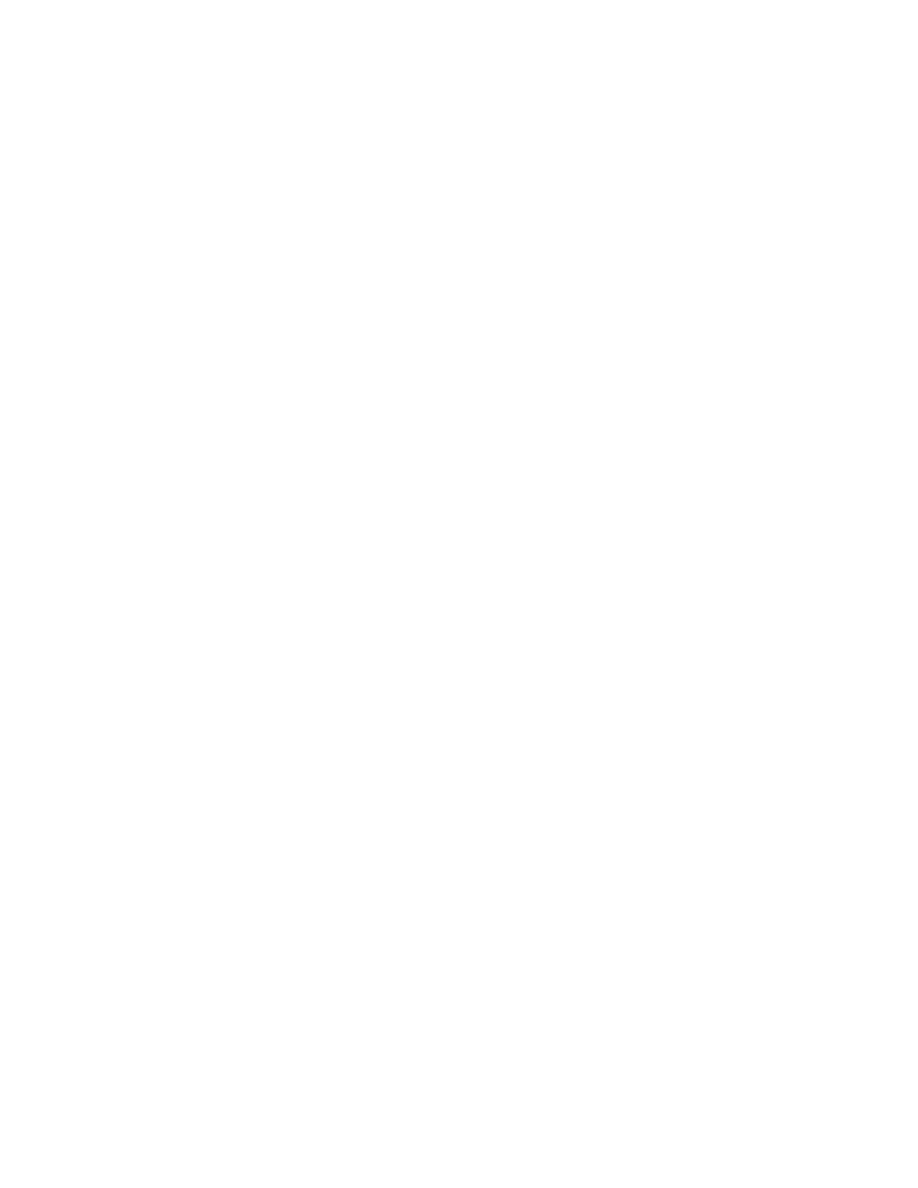
397
Federal Aviation Administration, DOT
§ 129.23
maintain communications with its air-
craft and must assist station operators
in directing traffic.
[Doc. No. FAA–2002–14002, 72 FR 31683, June 7,
2007]
§ 129.22 Communication and naviga-
tion equipment for rotorcraft oper-
ations under VFR over routes navi-
gated by pilotage.
(a) No foreign air carrier may operate
a rotorcraft under VFR over routes
that can be navigated by pilotage un-
less the rotorcraft is equipped with the
radio communication equipment nec-
essary under normal operating condi-
tions to fulfill the following:
(1) Communicate with at least one
appropriate station from any point on
the route;
(2) Communicate with appropriate air
traffic control facilities from any point
within Class B, Class C, or Class D air-
space, or within a Class E surface area
designated for an airport in which
flights are intended; and
(3) Receive meteorological informa-
tion from any point en route.
(b) No foreign air carrier may operate
a rotorcraft at night under VFR over
routes that can be navigated by pilot-
age unless that rotorcraft is equipped
with—
(1) Radio communication equipment
necessary under normal operating con-
ditions to fulfill the functions specified
in paragraph (a) of this section; and
(2) Navigation equipment suitable for
the route to be flown.
[Doc. No. FAA–2002–14002, 72 FR 31683, June 7,
2007]
§ 129.23 Transport category cargo
service airplanes: Increased zero
fuel and landing weights.
(a) Notwithstanding the applicable
structural provisions of the transport
category airworthiness regulations,
but subject to paragraphs (b) through
(g) of this section, a foreign air carrier
may operate (for cargo service only)
any of the following transport category
airplanes (certificated under part 4b of
the Civil Air Regulations effective be-
fore March 13, 1956) at increased zero
fuel and landing weights—
(1) DC–6A, DC–6B, DC–7B, and DC–7C;
and
(2) L–1049 B, C, D, E, F, G, and H, and
the L–1649A when modified in accord-
ance with supplemental type certifi-
cate SA 4–1402.
(b) The zero fuel weight (maximum
weight of the airplane with no dispos-
able fuel and oil) and the structural
landing weight may be increased be-
yond the maximum approved in full
compliance with applicable rules only
if the Administrator finds that—
(1) The increase is not likely to re-
duce seriously the structural strength;
(2) The probability of sudden fatigue
failure is not noticeably increased;
(3) The flutter, deformation, and vi-
bration characteristics do not fall
below those required by applicable reg-
ulations; and
(4) All other applicable weight limi-
tations will be met.
(c) No zero fuel weight may be in-
creased by more than five percent, and
the increase in the structural landing
weight may not exceed the amount, in
pounds, of the increase in zero fuel
weight.
(d) Each airplane must be inspected
in accordance with the approved spe-
cial inspection procedures, for oper-
ations at increased weights, estab-
lished and issued by the manufacturer
of the type of airplane.
(e) A foreign air carrier may not op-
erate an airplane under this section un-
less the country of registry requires
the airplane to be operated in accord-
ance with the passenger-carrying
transport category performance oper-
ating limitations in part 121 or the
equivalent.
(f) The Airplane Flight Manual for
each airplane operated under this sec-
tion must be appropriately revised to
include the operating limitations and
information needed for operation at
the increased weights.
(g) Each airplane operated at an in-
creased weight under this section
must, before it is used in passenger
service, be inspected under the special
inspection procedures for return to pas-
senger service established and issued
by the manufacturer and approved by
the Administrator.
[Doc. No. 6403, 29 FR 19098, Dec. 30, 1964]
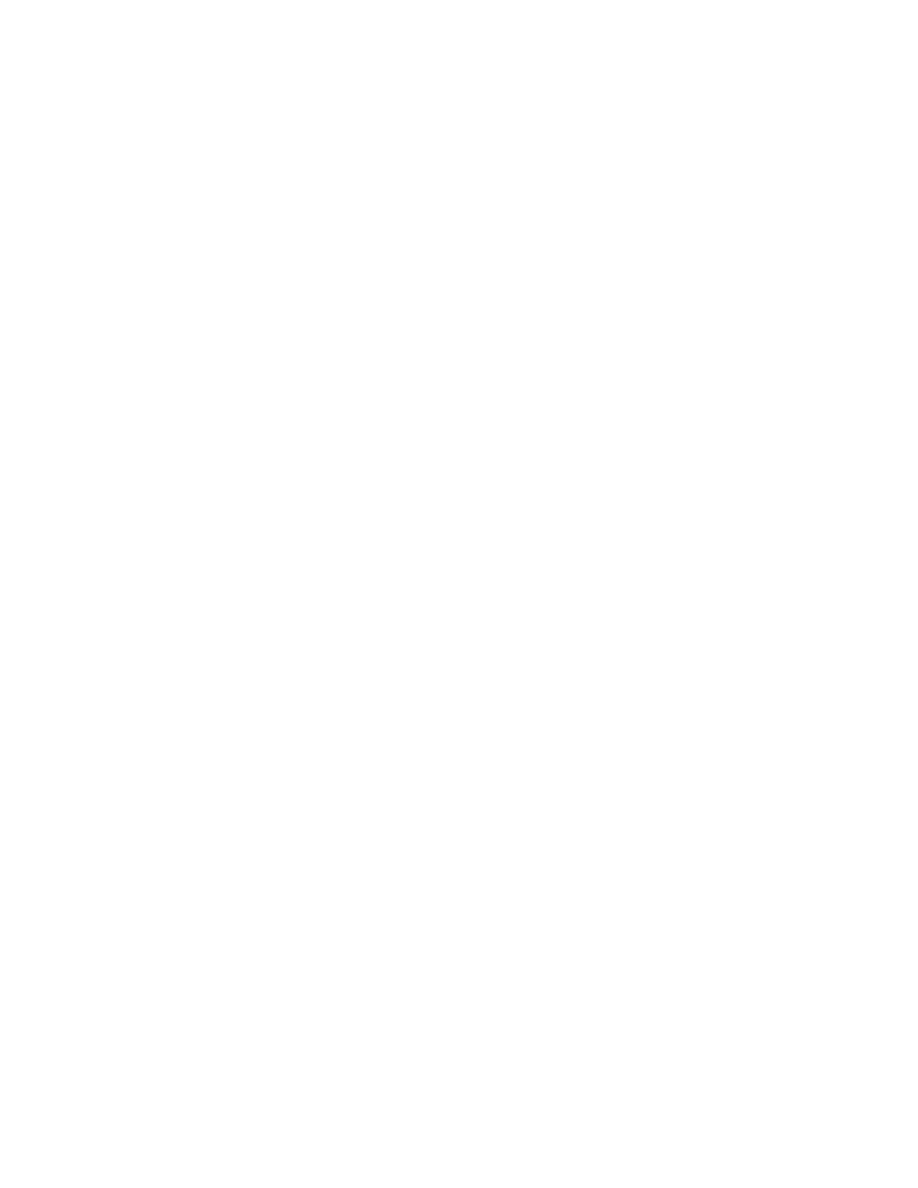
398
14 CFR Ch. I (1–1–24 Edition)
§ 129.24
§ 129.24 Cockpit voice recorders.
No person may operate an aircraft
under this part that is registered in the
United States unless it is equipped
with an approved cockpit voice re-
corder that meets the standards of
TSO–C123a, or later revision. The cock-
pit voice recorder must record the in-
formation that would be required to be
recorded if the aircraft were operated
under part 121, 125, or 135 of this chap-
ter, and must be installed by the com-
pliance times required by that part, as
applicable to the aircraft.
[Doc. No. FAA–2005–20245, 73 FR 12570, Mar. 7,
2008]
§ 129.25 Airplane security.
Foreign air carriers conducting oper-
ations under this part must comply
with the applicable security require-
ments in 49 CFR chapter XII.
[67 FR 8350, Feb. 22, 2002]
§ 129.28 Flightdeck security.
(a) After August 20, 2002, except for a
newly manufactured airplane on a non-
revenue delivery flight, no foreign air
carrier covered by § 129.1(a), may oper-
ate:
(1) A passenger carrying transport
category airplane within the United
States, except for overflights, unless
the airplane is equipped with a door be-
tween the passenger and pilot compart-
ment that incorporates features to re-
strict the unwanted entry of persons
into the flightdeck that are operable
from the flightdeck only; or
(2) A transport category all-cargo
airplane within the United States, ex-
cept for overflights, that has a door in-
stalled between the pilot compartment
and any other occupied compartment
on or after June 21, 2002, unless the
door incorporates features to restrict
the unwanted entry of persons into the
flightdeck that are operable from the
flightdeck only.
(b) To the extent necessary to meet
the requirements of paragraph (a) of
this section, the requirements of
§ 129.13(a) to maintain airworthiness
certification are waived until April 9,
2003. After that date, the requirements
of § 129.13(a) apply in full.
(c) After April 9, 2003, except for a
newly manufactured airplane on a non-
revenue delivery flight, no foreign air
carrier covered by § 129.1(a) may oper-
ate a passenger carrying transport cat-
egory airplane, or a transport category
all-cargo airplane that has a door in-
stalled between the pilot compartment
and any other occupied compartment
on or after June 21, 2002, within the
United States, except for overflights,
unless the airplane’s flightdeck door
installation meets the requirements of
paragraphs (c)(1) and(2) of this section
or an alternative standard found ac-
ceptable to the Administrator.
(1) Except for a newly manufactured
airplane on a non-revenue delivery
flight, no foreign air carrier covered by
§ 129.1(a) may operate:
(i) After April 9, 2003, a passenger
carrying transport category airplane
within the United States, except on
overflights, unless the airplane’s
flightdeck door installation meets the
requirements of paragraphs (c)(2) and
(c)(3) of this section or an alternative
standard found acceptable to the Ad-
ministrator.
(ii) After October 1, 2003, a transport
category all-cargo airplane that had a
door installed between the pilot com-
partment and any other occupied com-
partment on or after June 21, 2002,
within the United States, except on
overflights, unless the airplane’s
flightdeck door installation meets the
requirements of paragraphs (c)(2) and
(c)(3) of this section or an alternative
standard found acceptable to the Ad-
ministrator; or the operator must im-
plement a security program approved
by the Transportation Security Admin-
istration (TSA) for the operation of all
airplanes in that operator’s fleet.
(2) The door must resist forcible in-
trusion by unauthorized persons and be
capable of withstanding impacts of 300
joules (221.3 foot-pounds) at the critical
locations on the door, as well as a 1,113-
newton (250 pounds) constant tensile
load on the knob or handle, and
(3) The door must resist penetration
by small arms fire and fragmentation
devices to a level equivalent to Level
IIIa of the National Institute of Justice
Standard (NIJ) 0101.04.
(d) After August 20, 2002, no foreign
air carrier covered by § 129.1 may oper-
ate a passenger carrying transport cat-
egory airplane, or a transport category
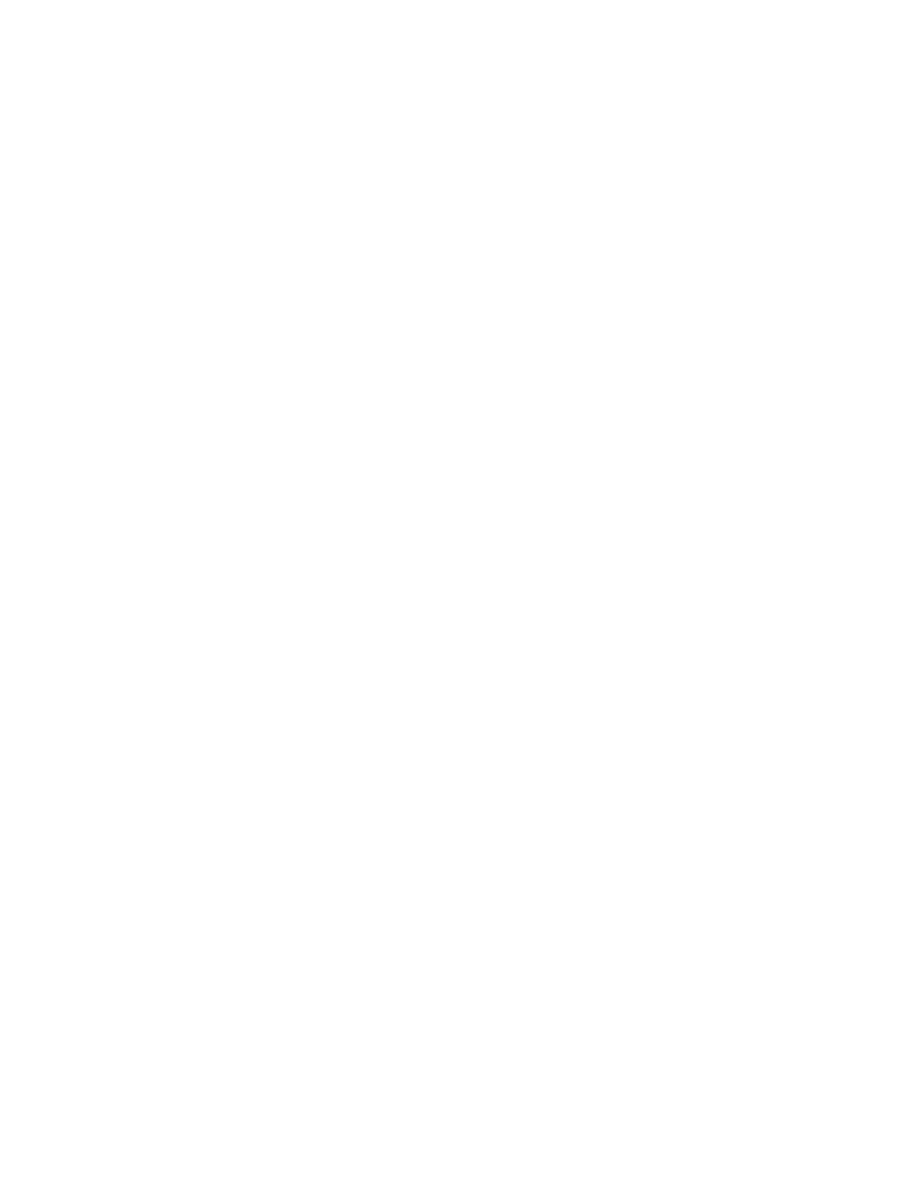
399
Federal Aviation Administration, DOT
§ 129.105
all-cargo airplane that has a door in-
stalled between the pilot compartment
and any other occupied compartment
on or after June 21, 2002, within the
United States, except for overflights,
unless the carrier has procedures in
place that are acceptable to the civil
aviation authority responsible for over-
sight of the foreign air carriers oper-
ating under this part to prevent access
to the flightdeck except as authorized
as follows:
(1) No person other than a person who
is assigned to perform duty on the
flight deck may have a key to the
flight deck door that will provide ac-
cess to the flightdeck.
(2) Except when it is necessary to
permit access and egress by persons au-
thorized in accordance with paragraph
(d)(3) of this section, a pilot in com-
mand of an airplane that has a lock-
able flight deck door in accordance
with § 129.28(a) and that is carrying pas-
sengers shall ensure that the door sepa-
rating the flight crew compartment
from the passenger compartment is
closed and locked at all times when the
airplane is being operated.
(3) No person may admit any person
to the flight deck of an airplane unless
the person being admitted is—
(i) A crewmember,
(ii) An inspector of the civil aviation
authority responsible for oversight of
the part 129 operator, or
(iii) Any other person authorized by
the civil aviation authority responsible
for oversight of the part 129 operator.
(e) The requirements of paragraph (a)
through (d) except (d)(3), do not apply
to transport category passenger car-
rying airplanes originally type certifi-
cated with a maximum passenger seat-
ing configuration of 19 seats or less, or
to all-cargo airplanes with a payload
capacity of 7,500 pounds or less.
[Doc. No. FAA–2002–12504, 67 FR 79824, Dec.
30, 2002, as amended by Amdt. 129–38, 68 FR
42882, July 18, 2003]
§ 129.29 Smoking prohibitions.
(a) No person may smoke and no op-
erator may permit smoking in any air-
craft lavatory.
(b) Unless otherwise authorized by
the Secretary of Transportation, no
person may smoke and no operator
may permit smoking anywhere on the
aircraft (including the passenger cabin
and the flight deck) during scheduled
passenger foreign air transportation or
during any scheduled passenger inter-
state or intrastate air transportation.
[Doc. No. FAA–2000–7467, 65 FR 36780, June 9,
2000]
Subpart B—Continued Airworthi-
ness and Safety Improve-
ments
§ 129.101 Purpose and definition.
(a) This subpart requires a foreign
person or foreign air carrier operating
a U.S. registered airplane in common
carriage to support the continued air-
worthiness of each airplane. These re-
quirements may include, but are not
limited to, revising the maintenance
program, incorporating design changes,
and incorporating revisions to Instruc-
tions for Continued Airworthiness.
(b) [Reserved]
[Amdt. 129–43, 72 FR 63413, Nov. 8, 2007, as
amended by Docket FAA–2018–0119, Amdt.
129–53, 83 FR 9174, Mar. 5, 2018]
§ 129.103 [Reserved]
§ 129.105 Aging airplane inspections
and records reviews for U.S.-reg-
istered multiengine aircraft.
(a)
Operation after inspection and
records review.
After the dates specified
in this paragraph, a foreign air carrier
or foreign person may not operate a
U.S.-registered multiengine airplane
under this part unless the Adminis-
trator has notified the foreign air car-
rier or foreign person that the Admin-
istrator has completed the aging air-
plane inspection and records review re-
quired by this section. During the in-
spection and records review, the for-
eign air carrier or foreign person must
demonstrate to the Administrator that
the maintenance of age sensitive parts
and components of the airplane has
been adequate and timely enough to
ensure the highest degree of safety.
(1)
Airplanes exceeding 24 years in serv-
ice on
December 8, 2003;
initial and re-
petitive inspections and records reviews.
For an airplane that has exceeded 24
years in service on December 8, 2003, no
later than December 5, 2007, and there-
after at intervals not to exceed 7 years.
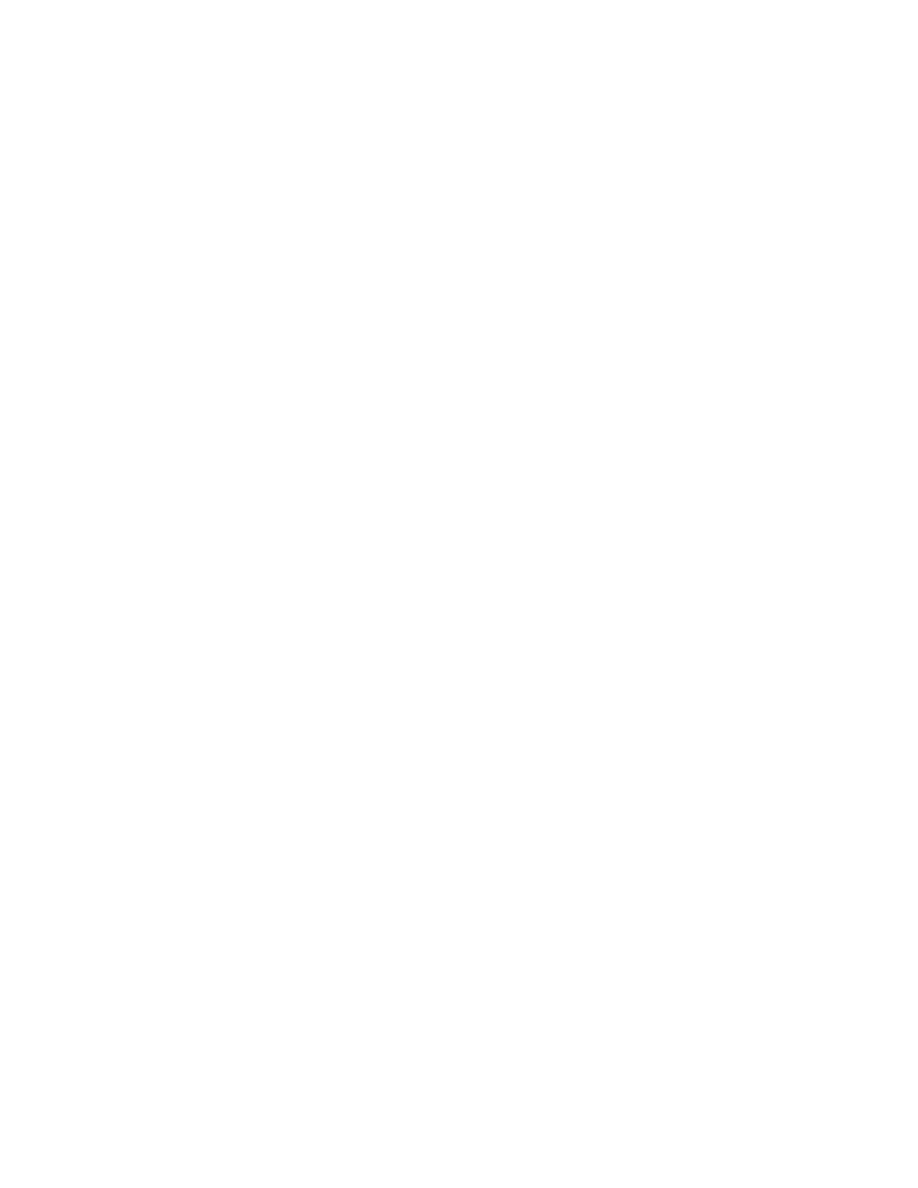
400
14 CFR Ch. I (1–1–24 Edition)
§ 129.107
(2)
Airplanes exceeding 14 years in serv-
ice but not 24 years in service on
Decem-
ber 8, 2003;
initial and repetitive inspec-
tions and records reviews.
For an air-
plane that has exceeded 14 years in
service, but not 24 years in service, on
December 8, 2003, no later than Decem-
ber 4, 2008, and thereafter at intervals
not to exceed 7 years.
(3)
Airplanes not exceeding 14 years in
service on
December 8, 2003;
initial and
repetitive inspections and records reviews.
For an airplane that has not exceeded
14 years in service on December 8, 2003,
no later than 5 years after the start of
the airplane’s 15th year in service and
thereafter at intervals not to exceed 7
years.
(b)
Unforeseen schedule conflict.
In the
event of an unforeseen scheduling con-
flict for a specific airplane, the Admin-
istrator may approve an extension of
up to 90 days beyond an interval speci-
fied in paragraph (b) of this section.
(c)
Airplane and records availability.
The foreign air carrier or foreign per-
son must make available to the Admin-
istrator each U.S.-registered multien-
gine airplane for which an inspection
and records review is required under
this section, in a condition for inspec-
tion specified by the Administrator, to-
gether with the records containing the
following information:
(1) Total years in service of the air-
plane;
(2) Total time in service of the air-
frame;
(3) Total flight cycles of the air-
frame;
(4) Date of the last inspection and
records review required by this section;
(5) Current status of life-limited
parts of the airframe;
(6) Time since the last overhaul of all
structural components required to be
overhauled on a specific time basis;
(7) Current inspection status of the
airplane, including the time since the
last inspection required by the inspec-
tion program under which the airplane
is maintained;
(8) Current status of applicable air-
worthiness directives, including the
date and methods of compliance, and if
the airworthiness directive involves re-
curring action, the time and date when
the next action is required;
(9) A list of major structural alter-
ations; and
(10) A report of major structural re-
pairs and the current inspection status
for those repairs.
(d)
Notification to Administrator.
Each
foreign air carrier or foreign person
must notify the Administrator at least
60 days before the date on which the
airplane and airplane records will be
made available for the inspection and
records review.
[Doc. No. FAA–1999–5401, 67 FR 72763, Dec. 6,
2002, as amended by Amdt. 129–34, 70 FR 5533,
Feb. 2, 2005; Amdt. 129–41, 70 FR 23936, May 6,
2005. Redesignated by Amdt. 129–43, 72 FR
63413, Nov. 8, 2007]
§ 129.107 Repairs assessment for pres-
surized fuselages.
(a) No foreign air carrier or foreign
persons operating a U.S. registered air-
plane may operate an Airbus Model
A300 (excluding
¥
600 series), British
Aerospace Model BAC 1–11, Boeing
Model 707, 720, 727, 737, or 747, McDon-
nell Douglas Model DC–8, DC–9/MD–80
or DC–10, Fokker Model F28, or Lock-
heed Model L–1011 beyond the applica-
ble flight cycle implementation time
specified below, or May 25, 2001, which-
ever occurs later, unless operations
specifications have been issued to ref-
erence repair assessment guidelines ap-
plicable to the fuselage pressure bound-
ary (fuselage skin, door skin, and bulk-
head webs), and those guidelines are in-
corporated in its maintenance pro-
gram. The repair assessment guidelines
must be approved by the responsible
Aircraft Certification Service office for
the type certificate for the affected air-
plane.
(1) For the Airbus Model A300 (ex-
cluding the –600 series), the flight cycle
implementation time is:
(i) Model B2: 36,000 flights.
(ii) Model B4–100 (including Model
B4–2C): 30,000 flights above the window
line, and 36,000 flights below the win-
dow line.
(iii) Model B4–200: 25,500 flights above
the window line, and 34,000 flights
below the window line.
(2) For all models of the British Aero-
space BAC 1–11, the flight cycle imple-
mentation time is 60,000 flights.
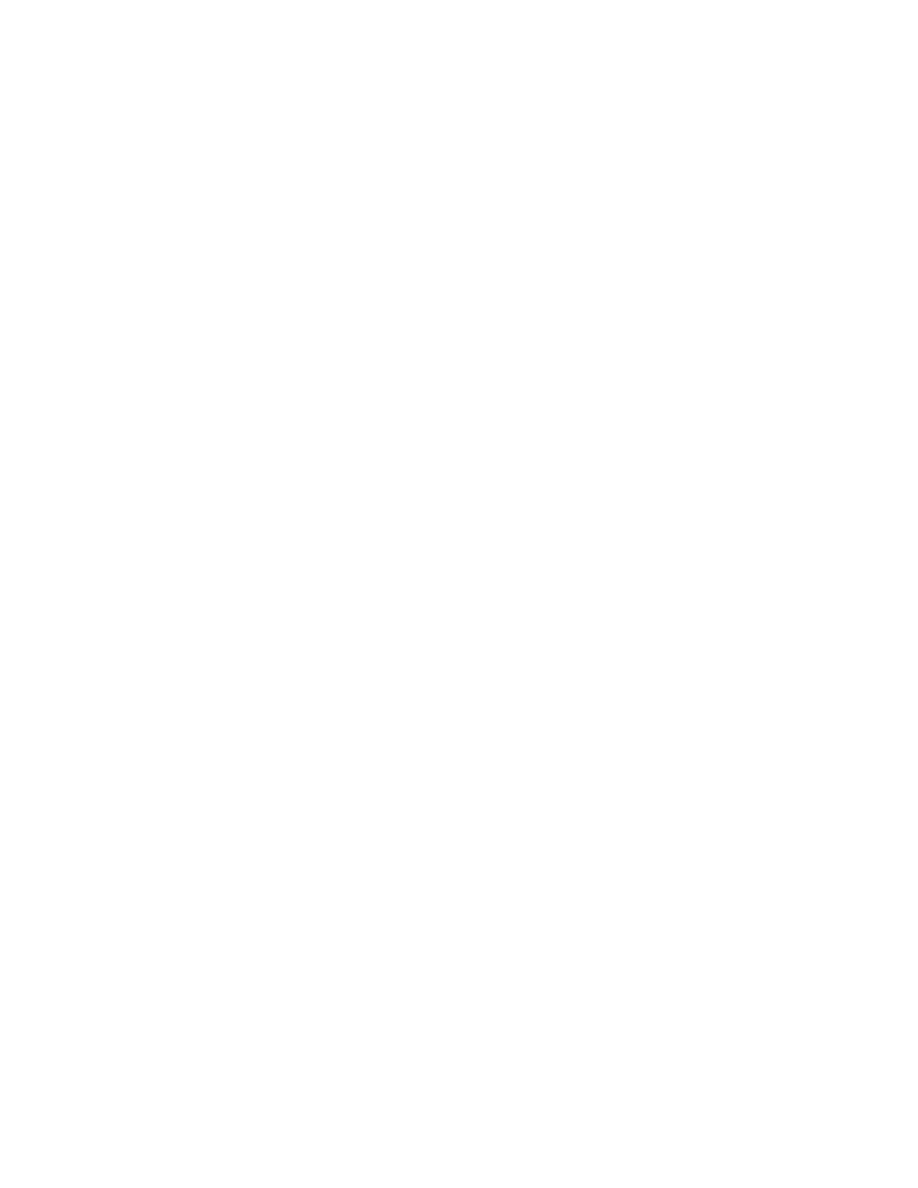
401
Federal Aviation Administration, DOT
§ 129.111
(3) For all models of the Boeing 707,
the flight cycle implementation time is
15,000 flights.
(4) For all models of the Boeing 720,
the flight cycle implementation time is
23,000 flights.
(5) For all models of the Boeing 727,
the flight cycle implementation time is
45,000 flights.
(6) For all models of the Boeing 737,
the flight cycle implementation time is
60,00 flights.
(7) For all models of the Boeing 747,
the flight cycle implementation time is
15,000 flights.
(8) For all models of the McDonnell
Douglas DC–8, the flight cycle imple-
mentation time is 30,000 flights.
(9) For all models of the McDonnell
Douglas DC–9/MD–80, the flight cycle
implementation time is 60,000 flights.
(10) For all models of the McDonnell
Douglas DC–10, the flight cycle imple-
mentation time is 30,000 flights.
(11) For all models of the Lockheed
L–1011, the flight cycle implementation
time is 27,000 flights.
(12) For the Fokker F–28 Mark 1000,
2000, 3000, and 4000, the flight cycle im-
plementation time is 60,000 flights.
(b) [Reserved]
[Doc. No. 29104, 65 FR 24126, Apr. 25, 2000; 65
FR 35703, June 5, 2000, as amended by Amdt.
129–30, 66 FR 23131, May 7, 2001; Amdt. 129–35,
67 FR 72834, Dec. 9, 2002; Amdt. 129–39, 69 FR
45942, July 30, 2004. Redesignated and amend-
ed by Amdt. 129–43, 72 FR 63413, Nov. 8, 2007;
Docket FAA–2018–0119, Amdt. 129–53, 83 FR
9174, Mar. 5, 2018]
§ 129.109 Supplemental inspections for
U.S.-registered aircraft.
(a)
Applicability.
This section applies
to U.S.-registered, transport category,
turbine powered airplanes with a type
certificate issued after January 1, 1958
that as a result of original type certifi-
cation or later increase in capacity
have—
(1) A maximum type certificated pas-
senger seating capacity of 30 or more;
or
(2) A maximum payload capacity of
7,500 pounds or more.
(b)
General requirements.
After Decem-
ber 20, 2010, a certificate holder may
not operate an airplane under this part
unless the following requirements have
been met:
(1)
Baseline Structure.
The certificate
holder’s maintenance program for the
airplane includes FAA-approved dam-
age-tolerance-based inspections and
procedures for airplane structure sus-
ceptible to fatigue cracking that could
contribute to a catastrophic failure.
For the purpose of this section, this
structure is termed ‘‘fatigue critical
structure.’’
(2)
Adverse effects of repairs, alter-
ations, and modifications.
The mainte-
nance program for the airplane in-
cludes a means for addressing the ad-
verse effects repairs, alterations, and
modifications may have on fatigue
critical structure and on inspections
required by paragraph (b)(1) of this sec-
tion. The means for addressing these
adverse effects must be approved by
the responsible Aircraft Certification
Service office.
(3)
Changes to maintenance program.
The changes made to the maintenance
program required by paragraph (b)(1)
and (b)(2) of this section, and any later
revisions to these changes, must be
submitted to the Principal Mainte-
nance Inspector for review and ap-
proval.
[Doc. No. FAA–1999–5401, 70 FR 5532, Feb. 2,
2005. Redesignated by Amdt. 129–43, 72 FR
63413, Nov. 8, 2007; Amdt. 129–44, 72 FR 70508,
Dec. 12, 2007; Docket FAA–2018–0119, Amdt.
129–53, 83 FR 9174, Mar. 5, 2018]
§ 129.111 Electrical wiring inter-
connection systems (EWIS) mainte-
nance program.
(a) Except as provided in paragraph
(f) of this section, this section applies
to transport category, turbine-powered
airplanes with a type certificate issued
after January 1, 1958, that, as a result
of original type certification or later
increase in capacity, have—
(1) A maximum type-certificated pas-
senger capacity of 30 or more, or
(2) A maximum payload capacity of
7500 pounds or more.
(b) After March 10, 2011, no foreign
person or foreign air carrier may oper-
ate a U.S.-registered airplane identi-
fied in paragraph (a) of this section un-
less the maintenance program for that
airplane includes inspections and pro-
cedures for EWIS.
(c) The proposed EWIS maintenance
program changes must be based on
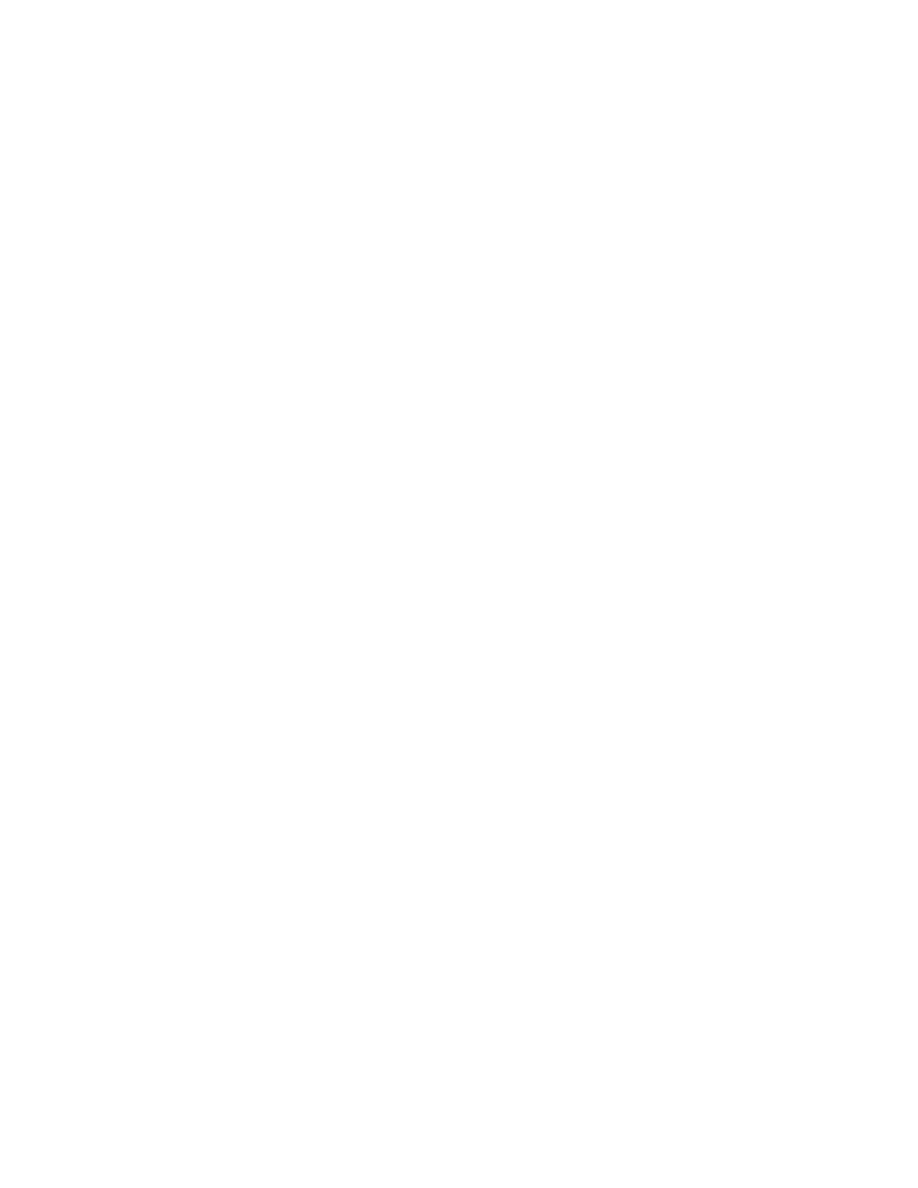
402
14 CFR Ch. I (1–1–24 Edition)
§ 129.113
EWIS Instructions for Continued Air-
worthiness (ICA) that have been devel-
oped in accordance with the provisions
of Appendix H of part 25 of this chapter
applicable to each affected airplane (in-
cluding those ICA developed for supple-
mental type certificates installed on
each airplane) and that have been ap-
proved by the responsible Aircraft Cer-
tification Service office.
(1) For airplanes subject to § 26.11 of
this chapter, the EWIS ICA must com-
ply with paragraphs H25.5(a)(1) and (b).
(2) For airplanes subject to § 25.1729 of
this chapter, the EWIS ICA must com-
ply with paragraph H25.4 and all of
paragraph H25.5.
(d) After March 10, 2011, before re-
turning a U.S.-registered airplane to
service after any alterations for which
EWIS ICA are developed, the foreign
person or foreign air carrier must in-
clude in the maintenance program for
that airplane inspections and proce-
dures for EWIS based on those ICA.
(e) The EWIS maintenance program
changes identified in paragraphs (c)
and (d) of this section and any later
EWIS revisions must be submitted to
the Principal Inspector or Flight
Standards office responsible for review
and approval.
(f) This section does not apply to the
following airplane models:
(1) Lockheed L–188
(2) Bombardier CL–44
(3) Mitsubishi YS–11
(4) British Aerospace BAC 1–11
(5) Concorde
(6) deHavilland D.H. 106 Comet 4C
(7) VFW–Vereinigte Flugtechnische
Werk VFW–614
(8) Illyushin Aviation IL 96T
(9) Bristol Aircraft Britannia 305
(10) Handley Page Herald Type 300
(11) Avions Marcel Dassault—Breguet
Aviation Mercure 100C
(12) Airbus Caravelle
(13) Lockheed L–300
[Amdt. 129–43, 72 FR 63413, Nov. 8, 2007, as
amended by Docket FAA–2018–0119, Amdt.
129–53, 83 FR 9174, Mar. 5, 2018]
§ 129.113 Fuel tank system mainte-
nance program.
(a) Except as provided in paragraph
(g) of this section, this section applies
to transport category, turbine-powered
airplanes with a type certificate issued
after January 1, 1958, that, as a result
of original type certification or later
increase in capacity, have—
(1) A maximum type-certificated pas-
senger capacity of 30 or more, or
(2) A maximum payload capacity of
7500 pounds or more.
(b) For each U.S.-registered airplane
on which an auxiliary fuel tank is in-
stalled under a field approval, before
June 16, 2008, the foreign person or for-
eign air carrier operating the airplane
must submit to the responsible Air-
craft Certification Service office pro-
posed maintenance instructions for the
tank that meet the requirements of
Special Federal Aviation Regulation
No. 88 (SFAR 88) of this chapter.
(c) After December 16, 2008, no for-
eign person or foreign air carrier may
operate a U.S.-registered airplane iden-
tified in paragraph (a) of this section
unless the maintenance program for
that airplane has been revised to in-
clude applicable inspections, proce-
dures, and limitations for fuel tank
systems.
(d) The proposed fuel tank system
maintenance program revisions must
be based on fuel tank system Instruc-
tions for Continued Airworthiness
(ICA) that have been developed in ac-
cordance with the applicable provisions
of SFAR 88 of this chapter or § 25.1529
and part 25, Appendix H, of this chap-
ter, in effect on June 6, 2001 (including
those developed for auxiliary fuel
tanks, if any, installed under supple-
mental type certificates or other de-
sign approval) and that have been ap-
proved by the responsible Aircraft Cer-
tification Service office.
(e) After December 16, 2008, before re-
turning a U.S.-registered airplane to
service after any alteration for which
fuel tank ICA are developed under
SFAR 88, or under § 25.1529 in effect on
June 6, 2001, the foreign person or for-
eign air carrier must include in the
maintenance program for the airplane
inspections and procedures for the fuel
tank system based on those ICA.
(f) The fuel tank system maintenance
program changes identified in para-
graphs (d) and (e) of this section and
any later fuel tank system revisions
must be submitted to the Principal In-
spector or Flight Standards office re-
sponsible for review and approval.
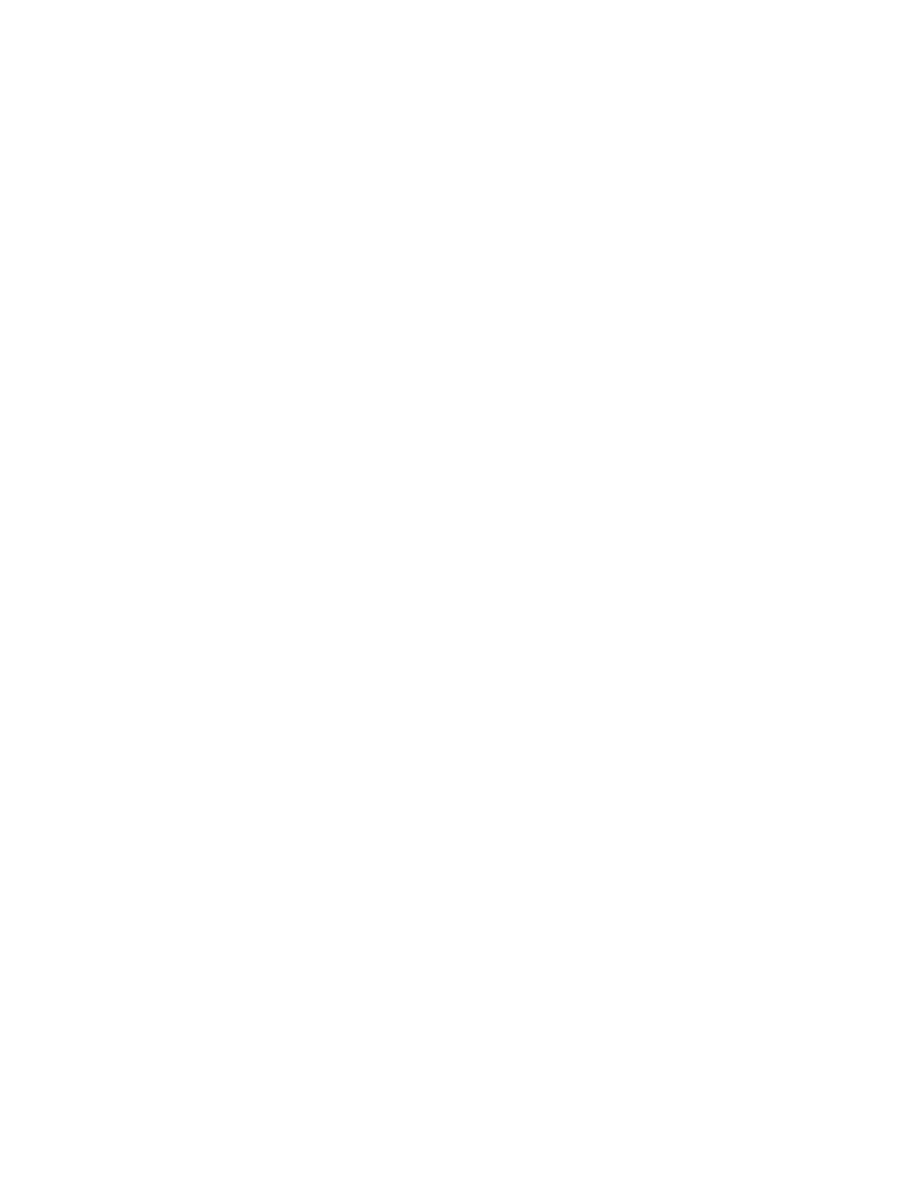
403
Federal Aviation Administration, DOT
§ 129.115
(g) This section does not apply to the
following airplane models:
(1) Bombardier CL–44
(2) Concorde
(3) deHavilland D.H. 106 Comet 4C
(4) VFW–Vereinigte Flugtechnische
Werk VFW–614
(5) Illyushin Aviation IL 96T
(6) Bristol Aircraft Britannia 305
(7) Handley Page Herald Type 300
(8) Avions Marcel Dassault—Breguet
Aviation Mercure 100C
(9) Airbus Caravelle
(10) Lockheed L–300
[Amdt. 129–43, 72 FR 63413, Nov. 8, 2007, as
amended by Docket FAA–2018–0119, Amdt.
129–53, 83 FR 9174, Mar. 5, 2018]
§ 129.115 Limit of validity.
(a)
Applicability.
This section applies
to foreign air carriers or foreign per-
sons operating any U.S.-registered
transport category, turbine-powered
airplane with a maximum takeoff gross
weight greater than 75,000 pounds and a
type certificate issued after January 1,
1958, regardless of whether the max-
imum takeoff gross weight is a result
of an original type certificate or a
later design change. This section also
applies to foreign air carriers or for-
eign persons operating any other U.S.-
registered transport category, turbine-
powered airplane with a type certifi-
cate issued after January 1, 1958, re-
gardless of the maximum takeoff gross
weight, for which a limit of validity of
the engineering data that supports the
structural maintenance program (here-
after referred to as LOV) is required in
accordance with § 25.571 or § 26.21 of this
chapter after January 14, 2011.
(b)
Limit of validity.
No foreign air
carrier or foreign person may operate a
U.S.-registered airplane identified in
paragraph (a) of this section after the
applicable date identified in Table 1 of
this section, unless an Airworthiness
Limitations section (ALS) approved
under Appendix H to part 25 or § 26.21 of
this chapter is incorporated into its
maintenance program. The ALS must—
(1) Include an LOV approved under
§ 25.571 or § 26.21 of this chapter, as ap-
plicable, except as provided in para-
graph (f) of this section; and
(2) Be clearly distinguishable within
its maintenance program.
(c)
Operation of airplanes excluded
from § 26.21.
No certificate holder may
operate an airplane identified in
§ 26.21(g) of this chapter after July 14,
2013, unless an ALS approved under Ap-
pendix H to part 25 or § 26.21 of this
chapter is incorporated into its main-
tenance program. The ALS must—
(1) Include an LOV approved under
§ 25.571 or § 26.21 of this chapter, as ap-
plicable, except as provided in para-
graph (f) of this section; and
(2) Be clearly distinguishable within
its maintenance program
(d)
Extended limit of validity.
No for-
eign air carrier or foreign person may
operate an airplane beyond the LOV or
extended LOV specified in paragraph
(b)(1), (c), (d), or (f) of this section, as
applicable, unless the following condi-
tions are met:
(1) An ALS must be incorporated into
its maintenance program that—
(i) Includes an extended LOV and any
widespread fatigue damage airworthi-
ness limitation items (ALIs) approved
under § 26.23 of this chapter; and
(ii) Is approved under § 26.23 of this
chapter;
(2) The extended LOV and the air-
worthiness limitation items pertaining
to widespread fatigue damage must be
clearly distinguishable within its
maintenance program.
(e)
Principal Maintenance Inspector ap-
proval.
Foreign air carriers or foreign
persons must submit the maintenance
program revisions required by para-
graphs (b), (c), and (d) of this section to
the Principal Maintenance Inspector or
Flight Standards office for review and
approval.
(f)
Exception.
For any airplane for
which an LOV has not been approved as
of the applicable compliance date spec-
ified in paragraph (c) or Table 1 of this
section, instead of including an ap-
proved LOV in the ALS, an operator
must include the applicable default
LOV specified in Table 1 or Table 2 of
this section, as applicable, in the ALS.

404
14 CFR Ch. I (1–1–24 Edition)
§ 129.115
T
ABLE
1—A
IRPLANES
S
UBJECT TO
§ 26.21
Airplane model
Compliance Date—
months after
January 14, 2011
Default LOV
[flight cycles (FC)
or flight hours (FH)]
Airbus—Existing
1
Models Only:
A300 B2–1A, B2–1C, B2K–3C, B2–203 .....................................
30 ....................................
48,000 FC
A300 B4–2C, B4–103 .................................................................
30 ....................................
40,000 FC
A300 B4–203 ...............................................................................
30 ....................................
34,000 FC
A300–600 Series .........................................................................
60 ....................................
30,000 FC/67,500 FH
A310–200 Series .........................................................................
60 ....................................
40,000 FC/60,000 FH
A310–300 Series .........................................................................
60 ....................................
35,000 FC/60,000 FH
A318 Series .................................................................................
60 ....................................
48,000 FC/60,000 FH
A319 Series .................................................................................
60 ....................................
48,000 FC/60,000 FH
A320–100 Series .........................................................................
60 ....................................
48,000 FC/48,000 FH
A320–200 Series .........................................................................
60 ....................................
48,000 FC/60,000 FH
A321 Series .................................................................................
60 ....................................
48,000 FC/60,000 FH
A330–200, –300 Series (except WV050 family) (non enhanced) 60 ....................................
40,000 FC/60,000 FH
A330–200, –300 Series WV050 family (enhanced) ....................
60 ....................................
33,000 FC/100,000 FH
A330–200 Freighter Series .........................................................
60 ....................................
See NOTE.
A340–200, –300 Series (except WV 027 and WV050 family)
(non enhanced).
60 ....................................
20,000 FC/80,000 FH
A340–200, –300 Series WV 027 (non enhanced) ......................
60 ....................................
30,000 FC/60,000 FH
A340–300 Series WV050 family (enhanced) ..............................
60 ....................................
20,000 FC/100,000 FH
A340–500, –600 Series ...............................................................
60 ....................................
16,600 FC/100,000 FH
A380–800 Series .........................................................................
72 ....................................
See NOTE.
Boeing—Existing
1
Models Only:
717 ...............................................................................................
60 ....................................
60,000 FC/60,000 FH
727 (all series) .............................................................................
30 ....................................
60,000 FC
737 (Classics): 737–100, –200, –200C, –300, –400, –500 ........
30 ....................................
75,000 FC
737 (NG): 737–600, –700, –700C, –800, –900, –900ER ...........
60 ....................................
75,000 FC
747 (Classics): 747–100, –100B, –100B SUD, –200B, –200C,
–200F, –300, 747SP, 747SR.
30 ....................................
20,000 FC
747–400: 747–400, –400D, –400F .............................................
60 ....................................
20,000 FC
757 ...............................................................................................
60 ....................................
50,000 FC
767 ...............................................................................................
60 ....................................
50,000 FC
777–200, –300 ............................................................................
60 ....................................
40,000 FC
777–200LR, 777–300ER .............................................................
72 ....................................
40,000 FC
777F ............................................................................................
72 ....................................
11,000 FC
Bombardier—Existing
1
Models Only:
CL–600: 2D15 (Regional Jet Series 705), 2D24 (Regional Jet
Series 900).
72 ....................................
60,000 FC
Embraer—Existing
1
Models Only:
ERJ 170 .......................................................................................
72 ....................................
See NOTE.
ERJ 190 .......................................................................................
72 ....................................
See NOTE.
Fokker—Existing
1
Models Only:
F.28 Mark 0070, Mark 0100 ........................................................
30 ....................................
90,000 FC
Lockheed—Existing
1
Models Only:
L–1011 .........................................................................................
30 ....................................
36,000 FC
188 ...............................................................................................
30 ....................................
26,600 FC
382 (all series) .............................................................................
30 ....................................
20,000 FC/50,000 FH
McDonnell Douglas—Existing
1
Models Only:
DC–8, –8F ...................................................................................
30 ....................................
50,000 FC/50,000 FH
DC–9 (except for MD–80 models) ..............................................
30 ....................................
100,000 FC/100,000 FH
MD–80 (DC–9–81, –82, –83, –87, MD–88) ................................
30 ....................................
50,000 FC/50,000 FH
MD–90 .........................................................................................
60 ....................................
60,000 FC/90,000 FH
DC–10–10, –15 ...........................................................................
30 ....................................
42,000 FC/60,000 FH
DC–10–30, –40, –10F, –30F, –40F ............................................
30 ....................................
30,000 FC/60,000 FH
MD–10–10F .................................................................................
60 ....................................
42,000 FC/60,000 FH
MD–10–30F .................................................................................
60 ....................................
30,000 FC/60,000 FH
MD–11, MD–11F .........................................................................
60 ....................................
20,000 FC/60,000 FH
Maximum Takeoff Gross Weight Changes:
All airplanes whose maximum takeoff gross weight has been
decreased to 75,000 pounds or below after January 14,
2011, or increased to greater than 75,000 pounds at any
time by an amended type certificate or supplemental type
certificate.
30, or within 12 months
after the LOV is ap-
proved, or before oper-
ating the airplane,
whichever occurs latest.
Not applicable.
All Other Airplane Models (TCs and amended TCs) not Listed
in Table 2.
72, or within 12 months
after the LOV is ap-
proved, or before oper-
ating the airplane,
whichever occurs latest.
Not applicable.
1
Type certificated as of January 14, 2011.
Note: Airplane operation limitation is stated in the Airworthiness Limitation section.
N
OTE
: Airplane operation limitation is stated in the Airworthiness Limitation section.
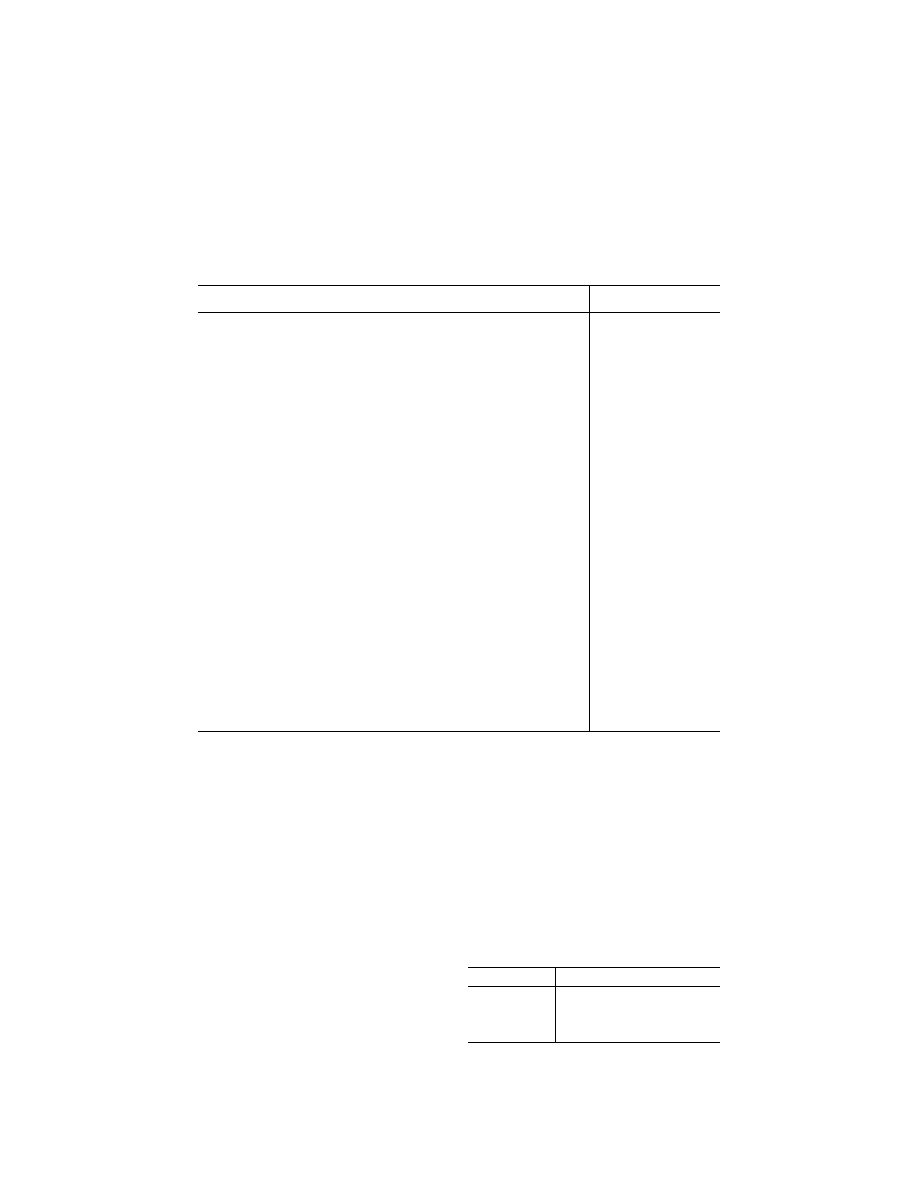
405
Federal Aviation Administration, DOT
§ 129.117
T
ABLE
2—A
IRPLANES
E
XCLUDED
F
ROM
§ 26.21
Airplane model
Default LOV [flight cycles (FC)
or flight hours (FH)]
Airbus:
Caravelle ...........................................................................................................................
15,000 FC/24,000 FH
Avions Marcel Dassault:
Breguet Aviation Mercure 100C .......................................................................................
20,000 FC/16,000 FH
Boeing:
Boeing 707 (–100 Series and –200 Series) .....................................................................
20,000 FC
Boeing 707 (–300 Series and –400 Series) .....................................................................
20,000 FC
Boeing 720 ........................................................................................................................
30,000 FC
Bombardier:
CL–44D4 and CL–44J ......................................................................................................
20,000 FC
BD–700 .............................................................................................................................
15,000 FC
Bristol Aeroplane Company:
Britannia 305 .....................................................................................................................
10,000 FC
British Aerospace Airbus, Ltd.:
BAC 1–11 (all models) ......................................................................................................
85,000 FC
British Aerospace (Commercial Aircraft) Ltd.:
Armstrong Whitworth Argosy A.W. 650 Series 101 .........................................................
20,000 FC
BAE Systems (Operations) Ltd.:
BAe 146–100A (all models) ..............................................................................................
50,000 FC
BAe 146–200–07 ..............................................................................................................
50,000 FC
BAe 146–200–07 Dev .......................................................................................................
50,000 FC
BAe 146–200–11 ..............................................................................................................
50,000 FC
BAe 146–200–07A ............................................................................................................
47,000 FC
BAe 146–200–11 Dev .......................................................................................................
43,000 FC
BAe 146–300 (all models) ................................................................................................
40,000 FC
Avro 146–RJ70A (all models) ...........................................................................................
40,000 FC
Avro 146–RJ85A and 146–RJ100A (all models) ..............................................................
50,000 FC
D & R Nevada, LLC:
Convair Model 22 ..............................................................................................................
1,000 FC/1,000 FH
Convair Model 23M ...........................................................................................................
1,000 FC/1,000 FH
deHavilland Aircraft Company, Ltd.:
D.H. 106 Comet 4C ..........................................................................................................
8,000 FH
Gulfstream:
GV .....................................................................................................................................
40,000 FH
GV–SP ..............................................................................................................................
40,000 FH
Ilyushin Aviation Complex:
IL–96T ...............................................................................................................................
10,000 FC/30,000 FH
Lockheed:
300–50A01 (USAF C 141A) .............................................................................................
20,000 FC
[Doc. No. FAA–2006–24281, 75 FR 69787, Nov. 15, 2010, as amended by Amdt. 129–51, 77 FR 30878,
May 24, 2012; Amdt. 129–51A, 77 FR 55107, Sept. 7, 2012; Docket FAA–2018–0119, Amdt. 129–53,
83 FR 9174, Mar. 5, 2018; Doc. No. FAA–2022–1355; Amdt. Nos. 129–54, 87 FR 75847, Dec. 9, 2022.]
§ 129.117 Flammability reduction
means.
(a)
Applicability.
Except as provided
in paragraph (o) of this section, this
section applies to U.S.-registered
transport category, turbine-powered
airplanes with a type certificate issued
after January 1, 1958, that as a result of
original type certification or later in-
crease in capacity have:
(1) A maximum type-certificated pas-
senger capacity of 30 or more, or
(2) A maximum payload capacity of
7,500 pounds or more.
(b)
New Production Airplanes.
Except
in accordance with § 129.14, no foreign
air carrier or foreign person may oper-
ate an airplane identified in Table 1 of
this section (including all-cargo air-
planes) for which application is made
for original certificate of airworthiness
or export airworthiness approval after
December 27, 2010 unless an Ignition
Mitigation Means (IMM) or Flamma-
bility Reduction Means (FRM) meeting
the requirements of § 26.33 of this chap-
ter is operational.
T
ABLE
1
Model—Boeing
Model—Airbus
747 Series
A318, A319, A320, A321 Series
737 Series
A330, A340 Series
777 Series
767 Series
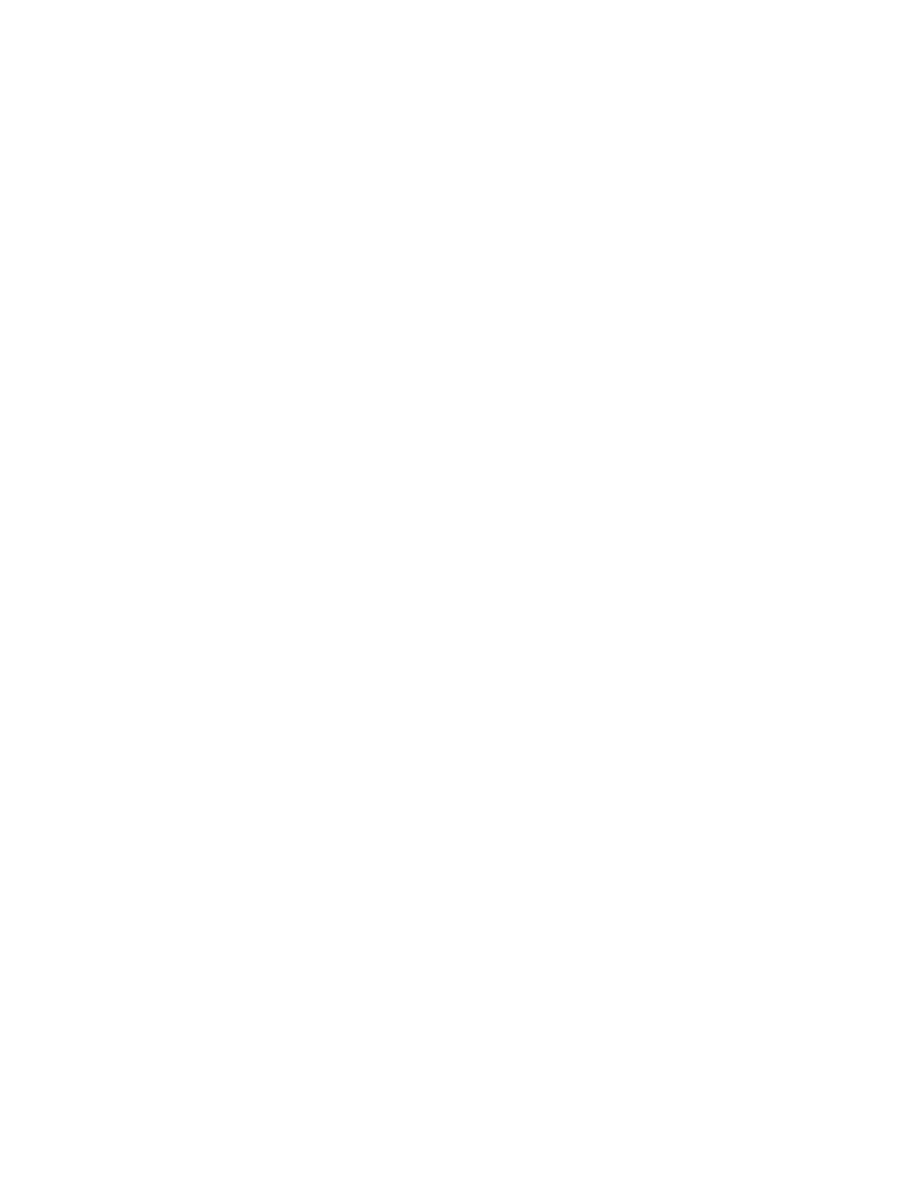
406
14 CFR Ch. I (1–1–24 Edition)
§ 129.117
(c)
Auxiliary Fuel Tanks.
After the ap-
plicable date stated in paragraph (e) of
this section, no foreign air carrier or
foreign person may operate any air-
plane subject § 26.33 of this chapter that
has an Auxiliary Fuel Tank installed
pursuant to a field approval, unless the
following requirements are met:
(1) The foreign air carrier or foreign
person complies with 14 CFR 26.35 by
the applicable date stated in that sec-
tion.
(2) The foreign air carrier or foreign
person installs Flammability Impact
Mitigation Means (FIMM), if applica-
ble, that are approved by the respon-
sible Aircraft Certification Service of-
fice.
(3) Except in accordance with § 129.14,
the FIMM, if applicable, are oper-
ational.
(d)
Retrofit.
After the dates specified
in paragraph (e) of this section, no for-
eign air carrier or foreign person may
operate an airplane to which this sec-
tion applies unless the requirements of
paragraphs (d)(1) and (d)(2) of this sec-
tion are met.
(1) IMM, FRM or FIMM, if required
by §§ 26.33, 26.35, or 26.37 of this chapter,
that are approved by the responsible
Aircraft Certification Service office,
are installed within the compliance
times specified in paragraph (e) of this
section.
(2) Except in accordance with § 129.14,
the IMM, FRM or FIMM, as applicable,
are operational.
(e)
Compliance Times.
Except as pro-
vided in paragraphs (k) and (l) of this
section, the installations required by
paragraph (d) of this section must be
accomplished no later than the appli-
cable dates specified in paragraph (e)(1)
or (e)(2) of this section.
(1) Fifty percent of each foreign air
carrier or foreign person’s fleet identi-
fied in paragraph (d)(1) of this section
must be modified no later than Decem-
ber 26, 2014.
(2) One hundred percent of each for-
eign air carrier or foreign person’s fleet
of airplanes subject to paragraph (d)(1)
or this section must be modified no
later than December 26, 2017.
(3) For those foreign air carriers or
foreign persons that have only one air-
plane for a model identified in Table 1,
the airplane must be modified no later
than December 26, 2017.
(f)
Compliance after Installation.
Ex-
cept in accordance with § 129.14, no per-
son may—
(1) Operate an airplane on which IMM
or FRM has been installed before the
dates specified in paragraph (e) of this
section unless the IMM or FRM is oper-
ational.
(2) Deactivate or remove an IMM or
FRM once installed unless it is re-
placed by a means that complies with
paragraph (d) of this section.
(g)
Maintenance Program Revisions.
No
foreign air carrier or foreign person
may operate an airplane for which air-
worthiness limitations have been ap-
proved by the responsible Aircraft Cer-
tification Service office in accordance
with §§ 26.33, 26.35, or 26.37 of this chap-
ter after the airplane is modified in ac-
cordance with paragraph (d) of this sec-
tion unless the maintenance program
for that airplane is revised to include
those applicable airworthiness limita-
tions.
(h) After the maintenance program is
revised as required by paragraph (g) of
this section, before returning an air-
plane to service after any alteration
for which airworthiness limitations are
required by §§ 25.981, 26.33, 26.35, or 26.37
of this chapter, the foreign person or
foreign air carrier must revise the
maintenance program for the airplane
to include those airworthiness limita-
tions.
(i) The maintenance program
changes identified in paragraphs (g)
and (h) of this section must be sub-
mitted to the operator’s responsible
Flight Standards office or Principal In-
spector for review and approval prior
to incorporation.
(j) The requirements of paragraph (d)
of this section do not apply to air-
planes operated in all-cargo service,
but those airplanes are subject to para-
graph (f) of this section.
(k) The compliance dates specified in
paragraph (e) of this section may be ex-
tended by one year, provided that—
(1) No later than March 26, 2009, the
foreign air carrier or foreign person no-
tifies its responsible Flight Standards
office or Principal Inspector that it in-
tends to comply with this paragraph;
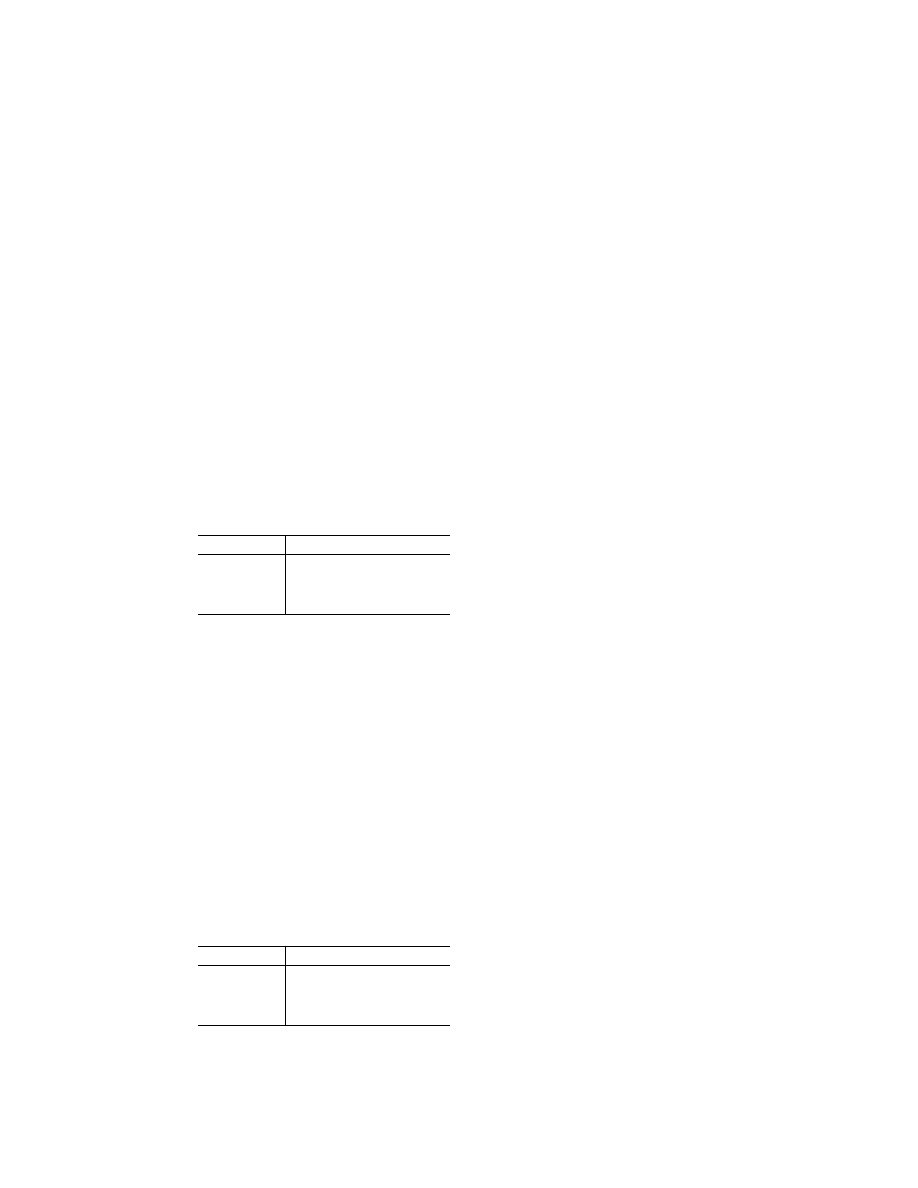
407
Federal Aviation Administration, DOT
§ 129.119
(2) No later than June 24, 2009, the
foreign air carrier or foreign person ap-
plies for an amendment to its oper-
ations specifications in accordance
with § 129.11 to include a requirement
for the airplane models specified in
Table 2 of this section to use ground
air conditioning systems for actual
gate times of more than 30 minutes,
when available at the gate and oper-
ational, whenever the ambient tem-
perature exceeds 60 degrees Fahrenheit;
and
(3) Thereafter, the certificate holder
uses ground air conditioning systems
as described in paragraph (k)(2) of this
section on each airplane subject to the
extension.
T
ABLE
2
Model—Boeing
Model—Airbus
747 Series
A318, A319, A320, A321 Series
737 Series
A300, A310 Series
777 Series
A330, A340 Series
767 Series
757 Series
(l) For any foreign air carrier or for-
eign person for which the operating
certificate is issued after December 26,
2008, the compliance date specified in
paragraph (e) of this section may be ex-
tended by one year, provided that the
foreign air carrier or foreign person
meets the requirements of paragraph
(k)(2) of this section when its initial
operations specifications are issued
and, thereafter, uses ground air condi-
tioning systems as described in para-
graph (k)(2) of this section on each air-
plane subject to the extension.
(m) After the date by which any per-
son is required by this section to mod-
ify 100 percent of the affected fleet, no
person may operate in passenger serv-
ice any airplane model specified in
Table 2 of this section unless the air-
plane has been modified to comply
with § 26.33(c) of this chapter.
T
ABLE
3
Model—Boeing
Model—Airbus
747 Series
A318, A319, A320, A321 Series
737 Series
A300, A310 Series
777 Series
A330, A340 Series
767 Series
757 Series
(n) No foreign air carrier or foreign
person may operate any airplane on
which an auxiliary fuel tank is in-
stalled after December 26, 2017 unless
the FAA has certified the tank as com-
pliant with § 25.981 of this chapter, in
effect on December 26, 2008.
(o)
Exclusions.
The requirements of
this section do not apply to the fol-
lowing airplane models:
(1) Convair CV–240, 340, 440, including
turbine powered conversions.
(2) Lockheed L–188 Electra.
(3) Vickers VC–10.
(4) Douglas DC–3, including turbine
powered conversions.
(5) Bombardier CL–44.
(6) Mitsubishi YS–11.
(7) BAC 1–11.
(8) Concorde.
(9) deHavilland D.H. 106 Comet 4C.
(10) VFW—Vereinigte Flugtechnische
VFW–614.
(11) Illyushin Aviation IL 96T.
(12) Bristol Aircraft Britannia 305.
(13) Handley Page Herald Type 300.
(14) Avions Marcel Dassault—Breguet
Aviation Mercure 100C.
(15) Airbus Caravelle.
(16) Fokker F–27/Fairchild Hiller FH–
227.
(17) Lockheed L–300.
[Doc. No. FAA–2005–22997, 73 FR 42503, July
21, 2008, as amended by Amdt. 129–47, 74 FR
31620, July 2, 2009; Docket FAA–2018–0119,
Amdt. 129–53, 83 FR 9174, Mar. 5, 2018]
§ 129.119 Fuel tank vent explosion pro-
tection.
(a)
Applicability.
This section applies
to transport category, turbine-powered
airplanes with a type certificate issued
after January 1, 1958, that have:
(1) A maximum type-certificated pas-
senger capacity of 30 or more; or
(2) A maximum payload capacity of
7,500 pounds or more.
(b)
New production airplanes.
No cer-
tificate holder may operate an airplane
for which the State of Manufacture
issued the original certificate of air-
worthiness or export airworthiness ap-
proval after August 23, 2018 unless
means, approved by the Administrator,
to prevent fuel tank explosions caused
by propagation of flames from outside
the fuel tank vents into the fuel tank
vapor spaces are installed and oper-
ational.
[Docket FAA–2014–0500, Amdt. 129–52, 81 FR
41208, June 24, 2016]
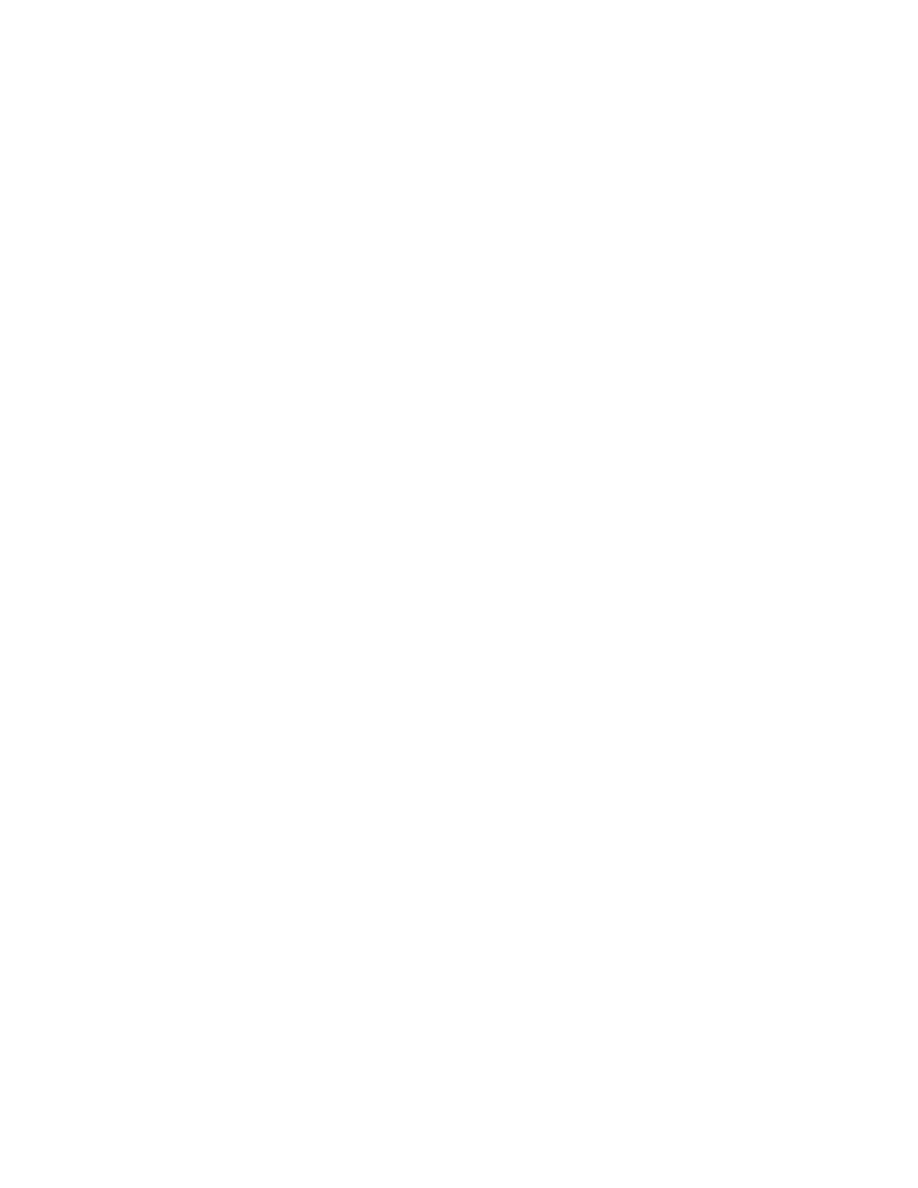
408
14 CFR Ch. I (1–1–24 Edition)
§ 129.201
Subpart C—Special Federal
Aviation Regulations
§ 129.201 SFAR No. 111—Lavatory Oxy-
gen Systems.
The requirements of § 121.1500 of this
chapter also apply to this part.
[Doc. No. FAA–2011–0186, 76 FR 12556, Mar. 8,
2011]
A
PPENDIX
A
TO
P
ART
129 [R
ESERVED
]
PART 133—ROTORCRAFT
EXTERNAL-LOAD OPERATIONS
Subpart A—Applicability
Sec.
133.1
Applicability.
Subpart B—Certification Rules
133.11
Certificate required.
133.13
Duration of certificate.
133.14
Carriage of narcotic drugs, mari-
huana, and depressant or stimulant drugs
or substances.
133.15
Application for certificate issuance or
renewal.
133.17
Requirements for issuance of a rotor-
craft external-load operator certificate.
133.19
Rotorcraft.
133.21
Personnel.
133.22
Employment of former FAA employ-
ees.
133.23
Knowledge and skill.
133.25
Amendment of certificate.
133.27
Availability, transfer, and surrender
of certificate.
Subpart C—Operating Rules and Related
Requirements
133.31
Emergency operations.
133.33
Operating rules.
133.35
Carriage of persons.
133.37
Crewmember training, currency, and
testing requirements.
133.39
Inspection authority.
Subpart D—Airworthiness Requirements
133.41
Flight characteristics requirements.
133.43
Structures and design.
133.45
Operating limitations.
133.47
Rotorcraft-load combination flight
manual.
133.49
Markings and placards.
133.51
Airworthiness certification.
A
UTHORITY
: 49 U.S.C. 106(g), 40113, 44701–
44702.
S
OURCE
: Docket No. 1529, 29 FR 603, Jan. 24,
1964, unless otherwise noted.
Subpart A—Applicability
§ 133.1 Applicability.
Except for aircraft subject to part 107
of this chapter, this part prescribes—
(a) Airworthiness certification rules
for rotorcraft used in; and
(b) Operating and certification rules
governing the conduct of rotorcraft ex-
ternal-load operations in the United
States by any person.
(c) The certification rules of this part
do not apply to—
(1) Rotorcraft manufacturers when
developing external-load attaching
means;
(2) Rotorcraft manufacturers dem-
onstrating compliance of equipment
utilized under this part or appropriate
portions of part 27 or 29 of this chapter;
(3) Operations conducted by a person
demonstrating compliance for the
issuance of a certificate or authoriza-
tion under this part;
(4) Training flights conducted in
preparation for the demonstration of
compliance with this part; or
(5) A Federal, State, or local govern-
ment conducting operations with pub-
lic aircraft.
(d) For the purpose of this part, a
person other than a crewmember or a
person who is essential and directly
connected with the external-load oper-
ation may be carried only in approved
Class D rotorcraft-load combinations.
[Doc. No. 15176, 42 FR 24198, May 12, 1977, as
amended by Amdt. 133–9, 51 FR 40707, Nov. 7,
1986; Docket FAA–2015–0150, Amdt. 133–15, 81
FR 42214, June 28, 2016]
Subpart B—Certification Rules
§ 133.11 Certificate required.
(a) No person subject to this part
may conduct rotorcraft external-load
operations within the United States
without, or in violation of the terms of,
a Rotorcraft External-Load Operator
Certificate issued by the Administrator
under § 133.17.
(b) No person holding a Rotorcraft
External-Load Operator Certificate
may conduct rotorcraft external-load
operations subject to this part under a


















